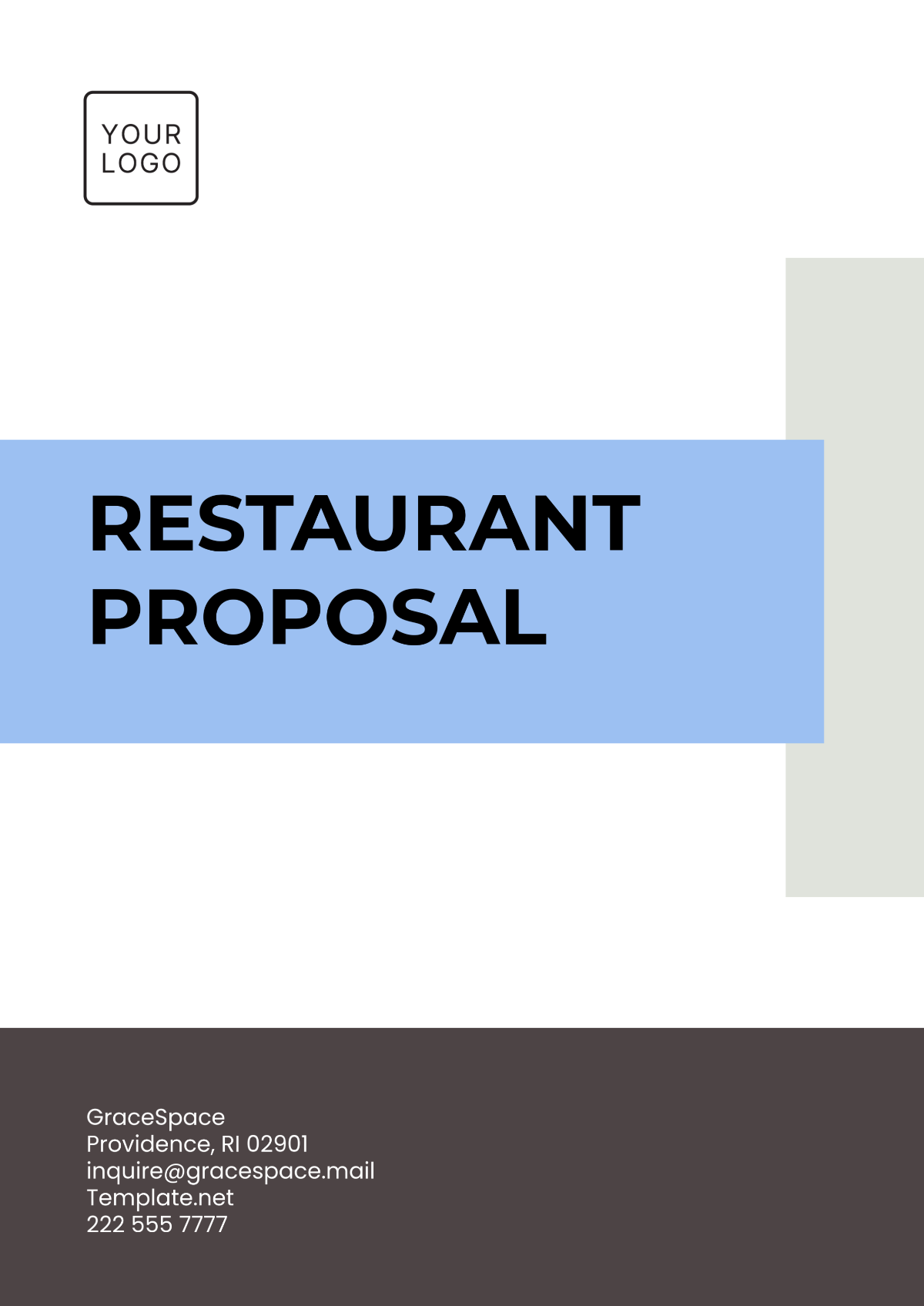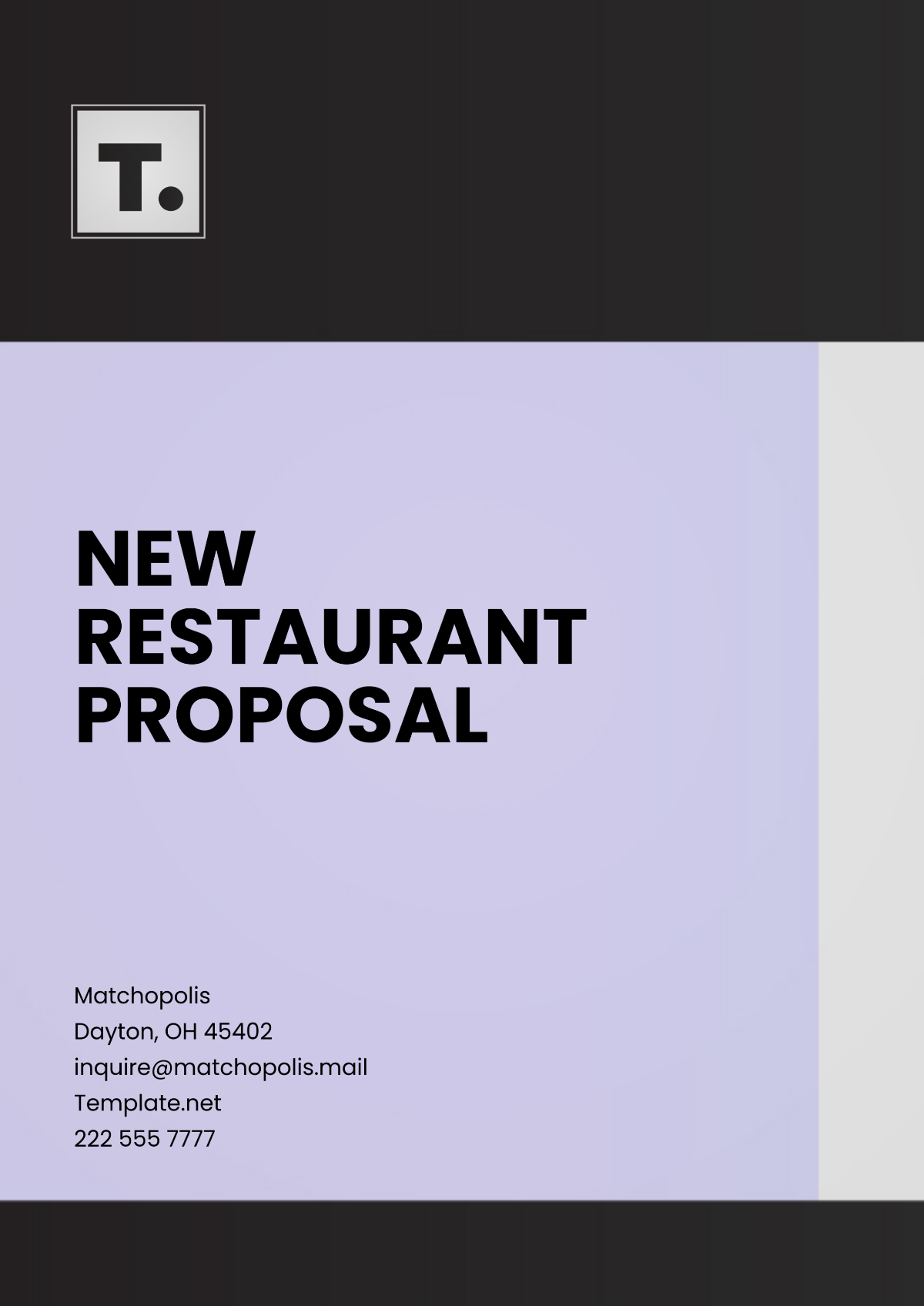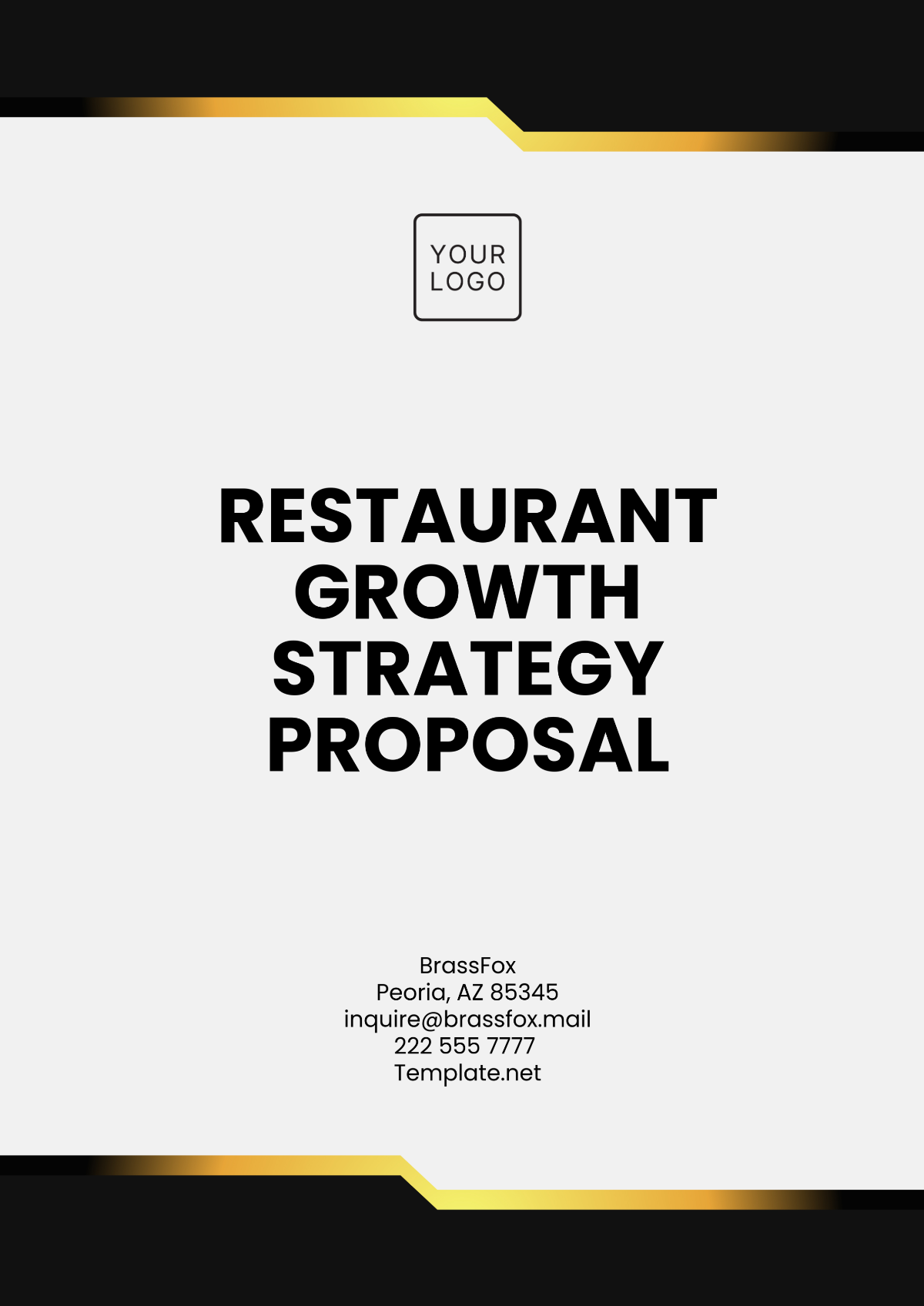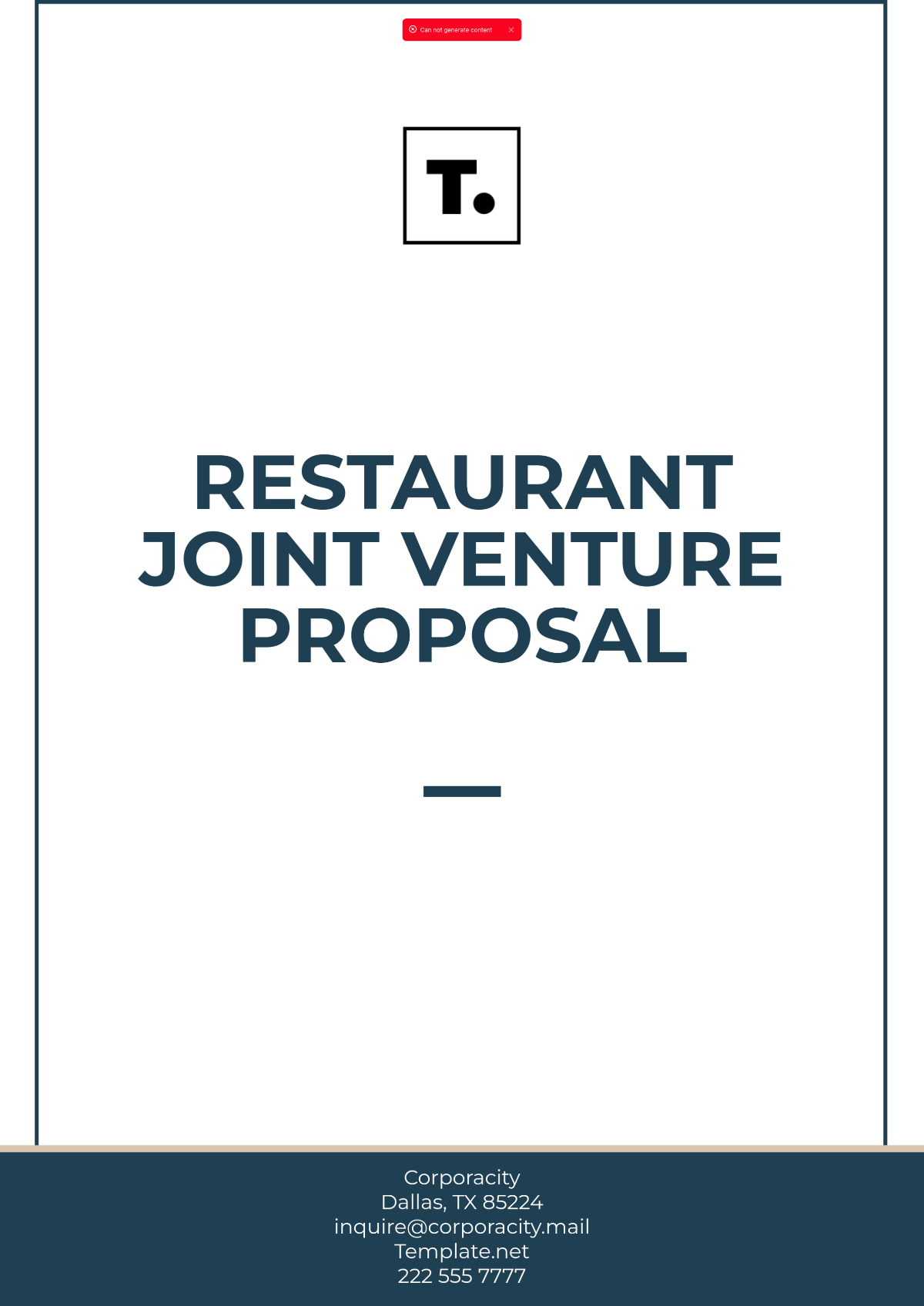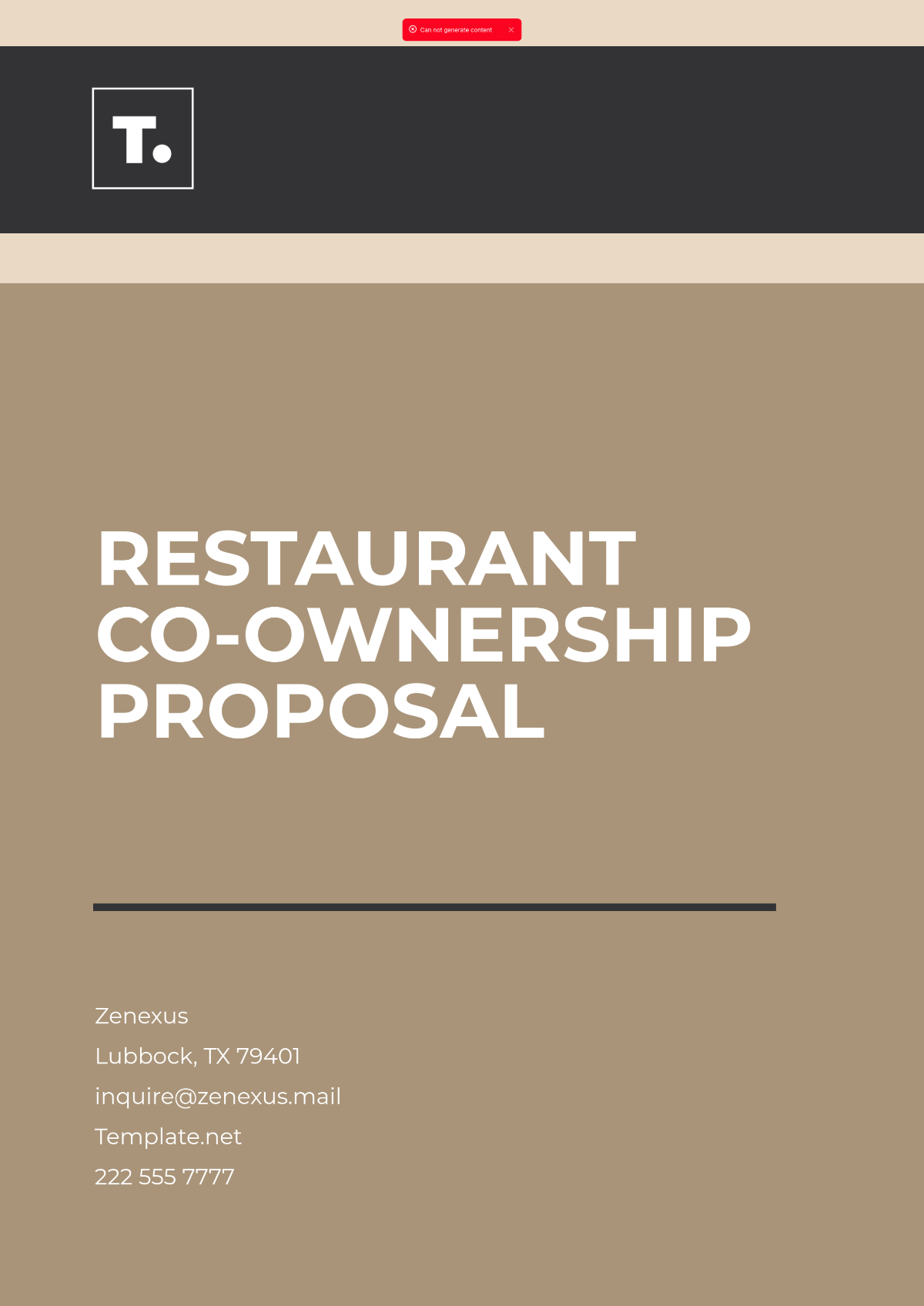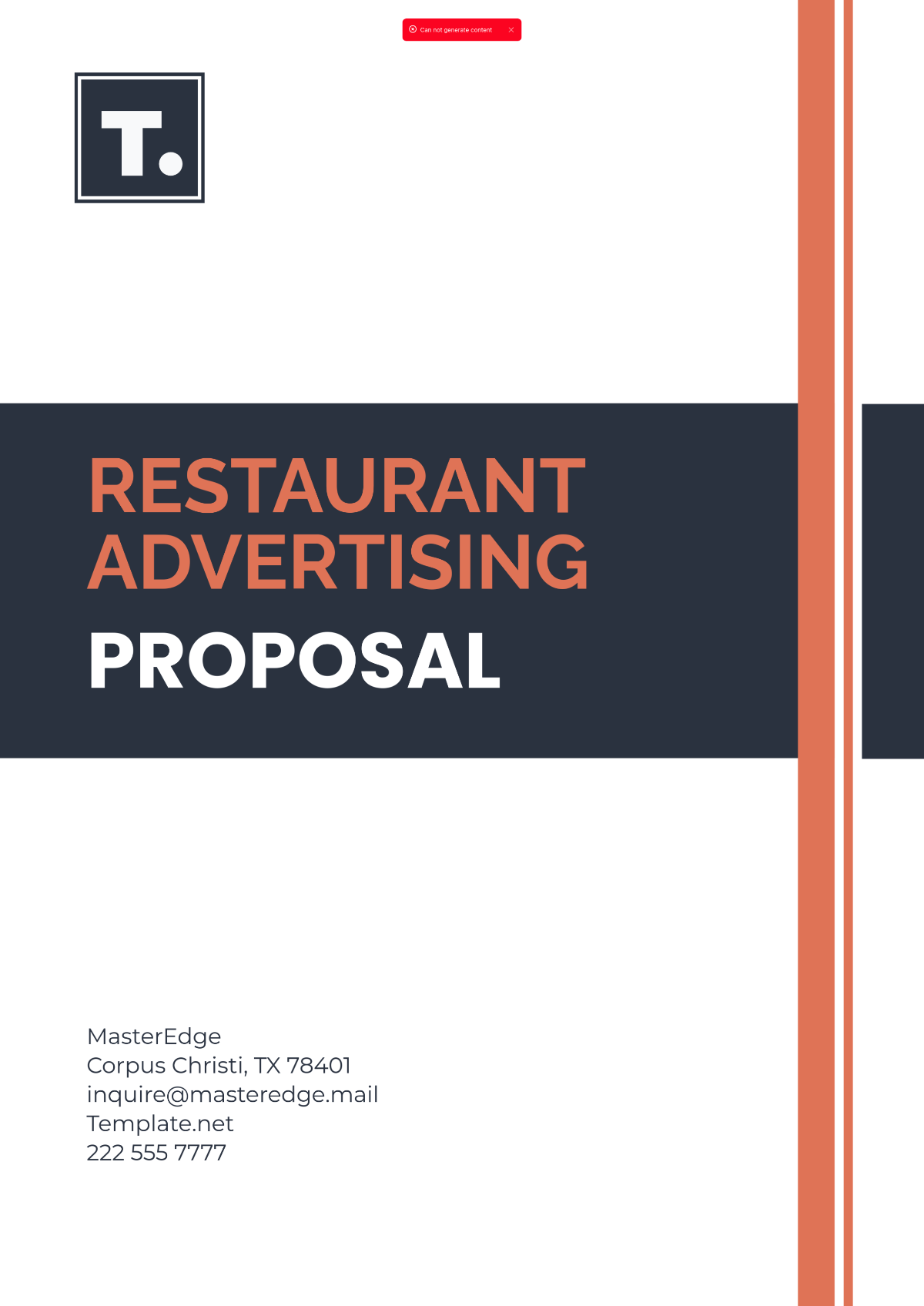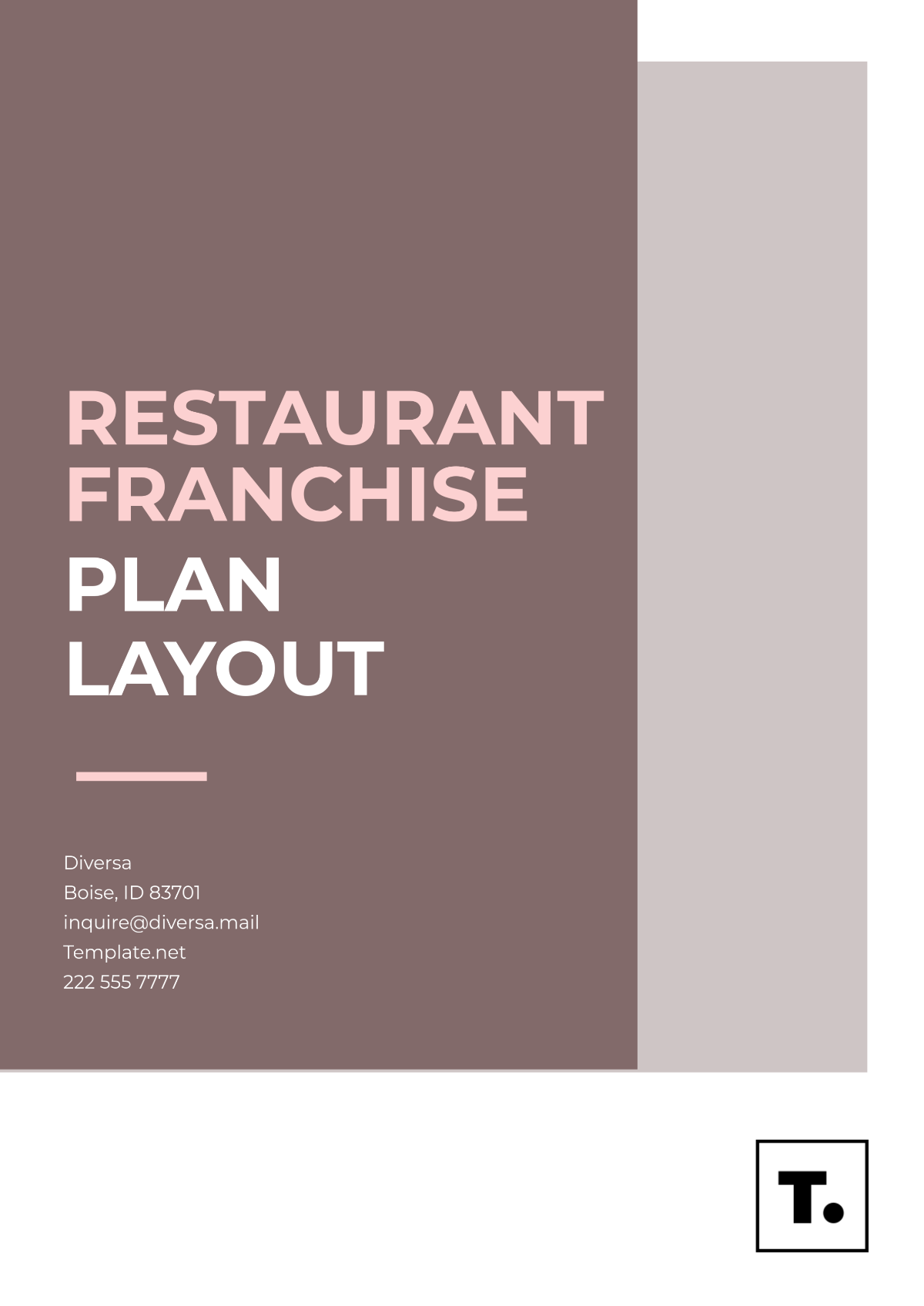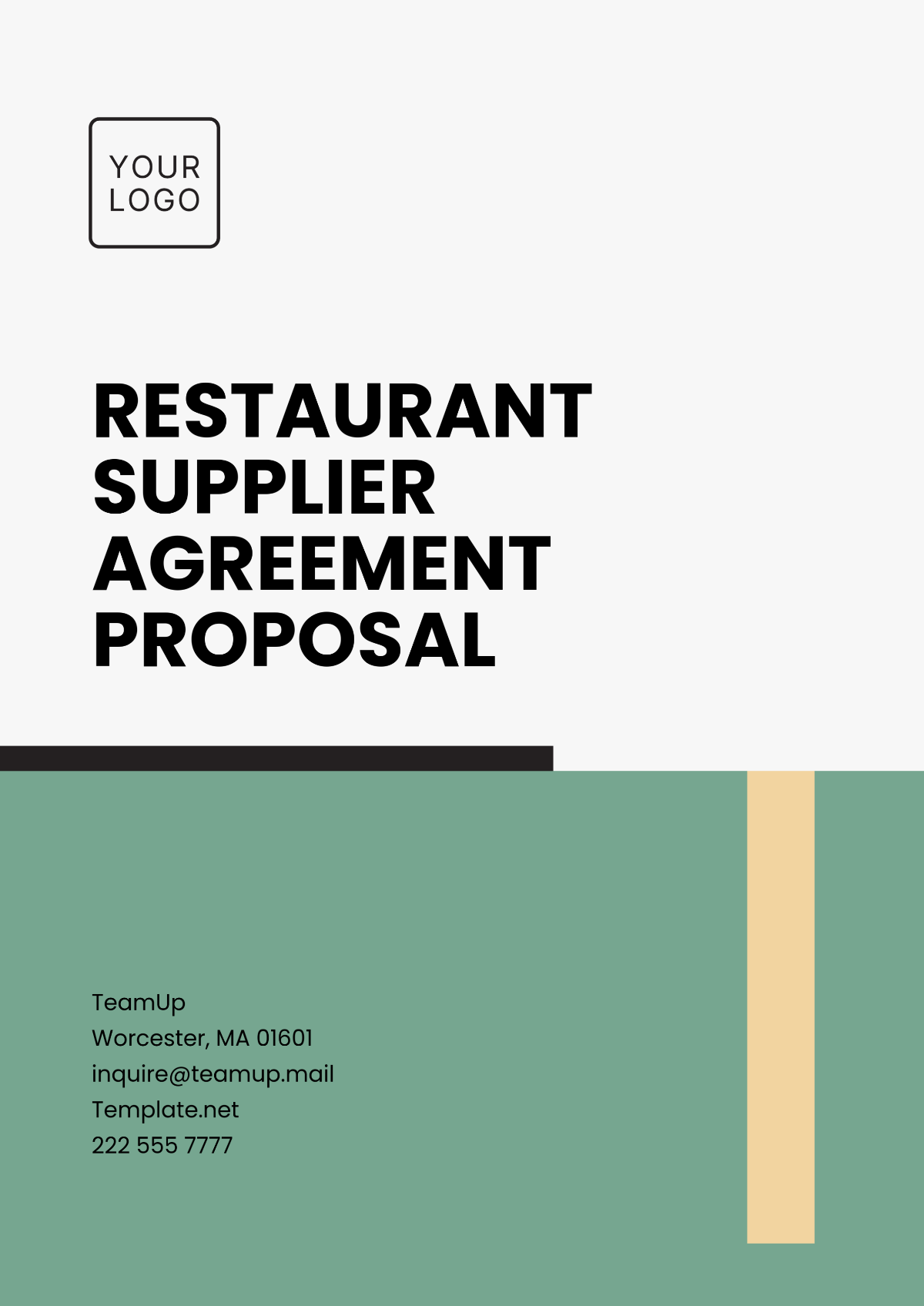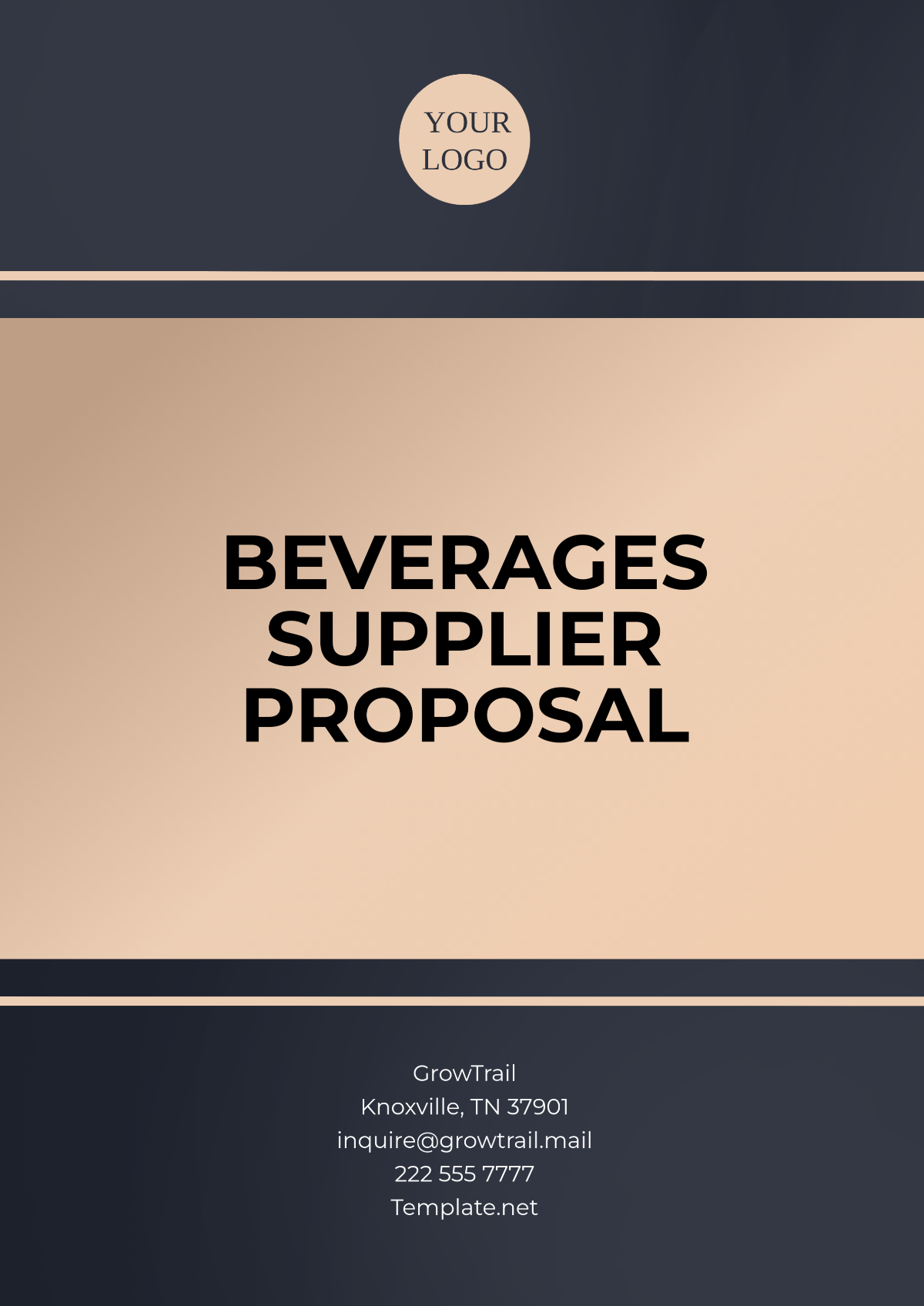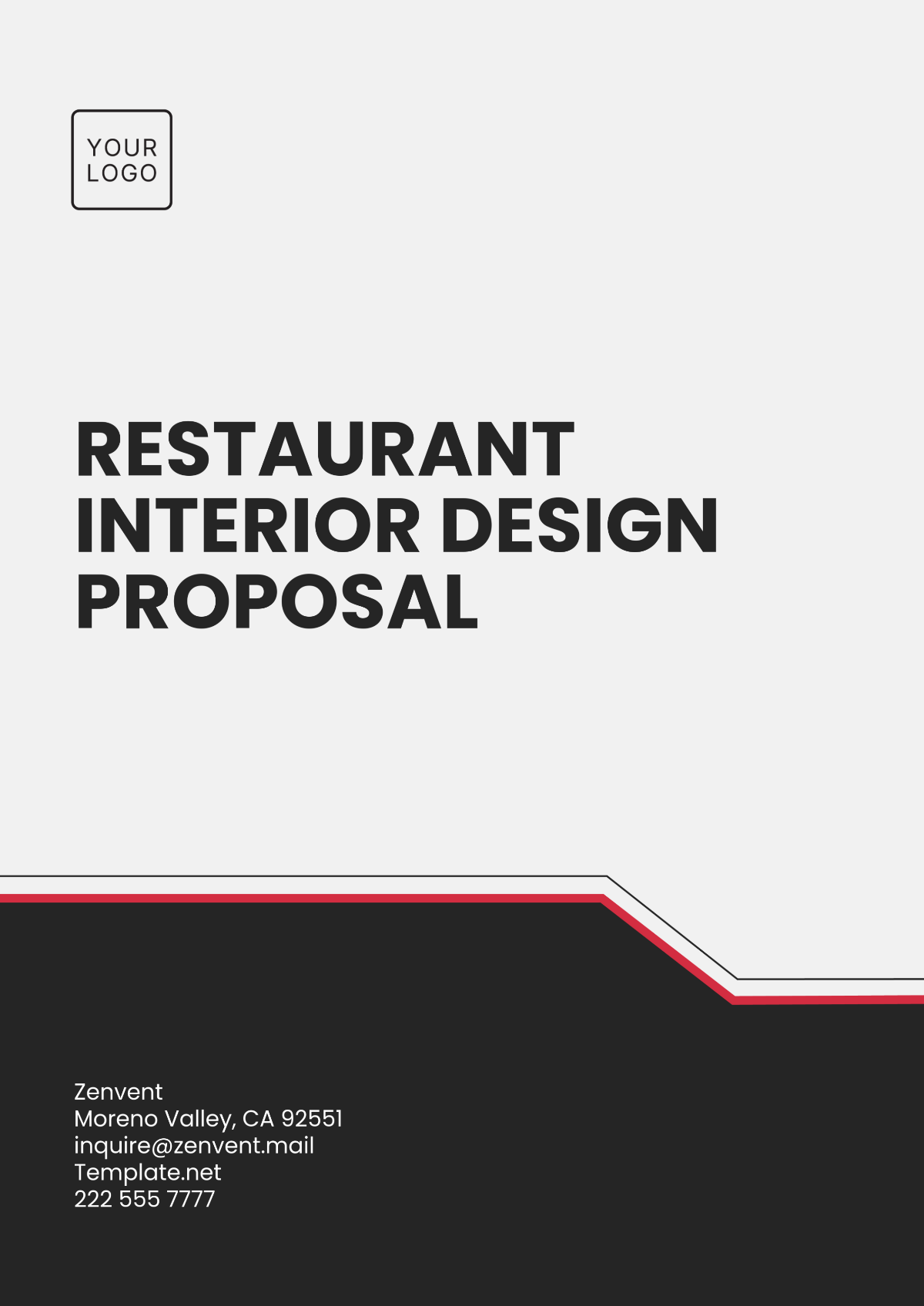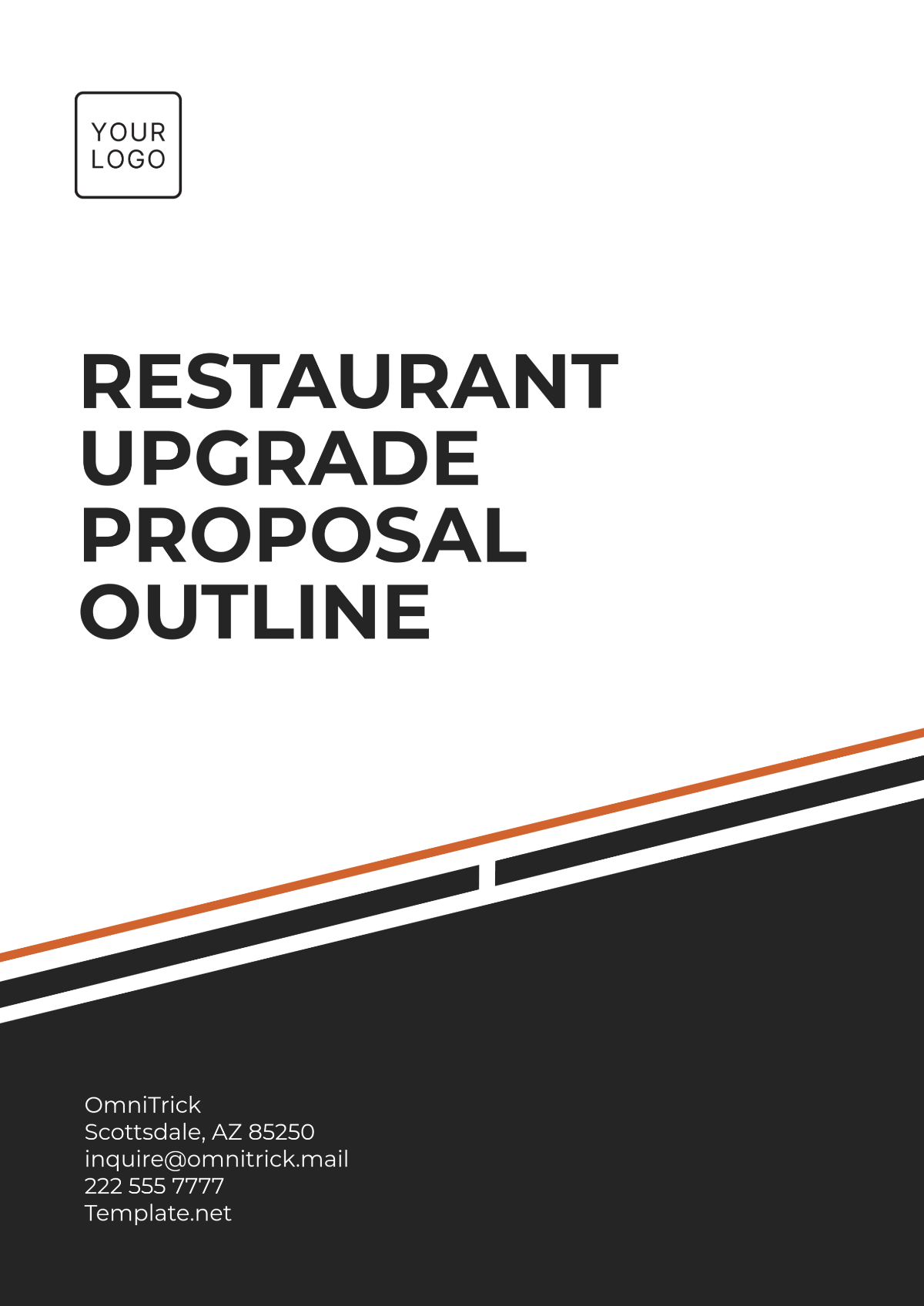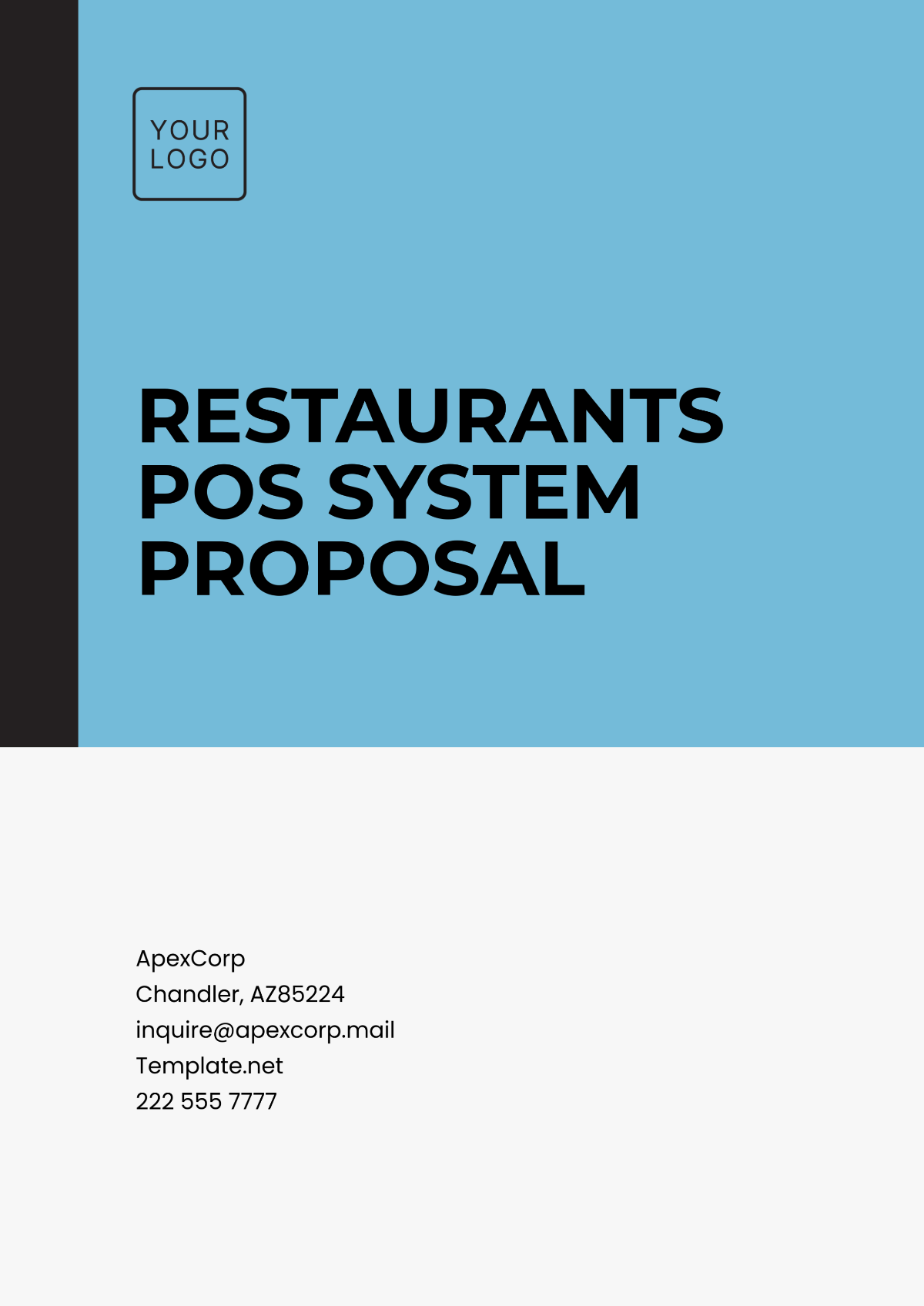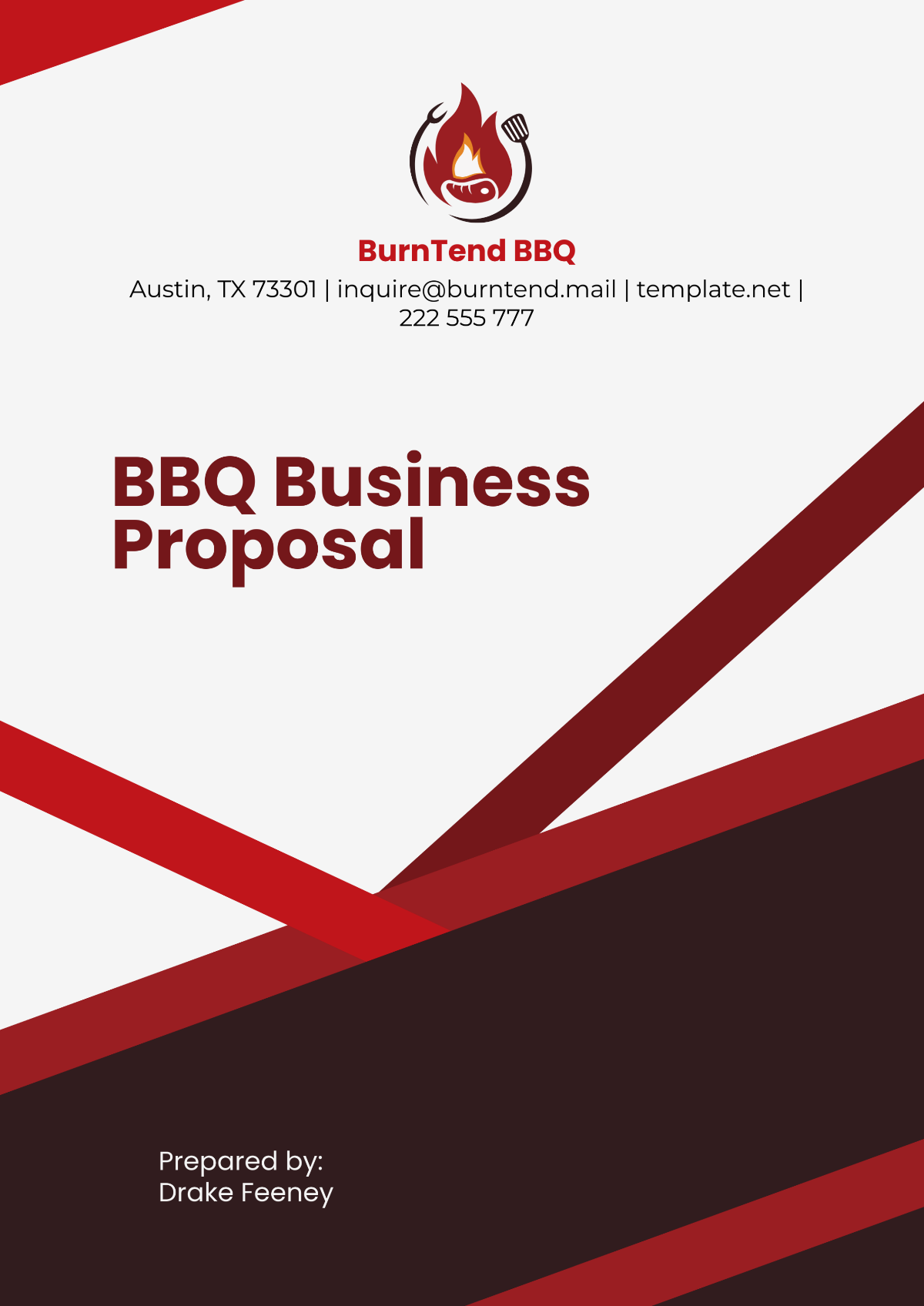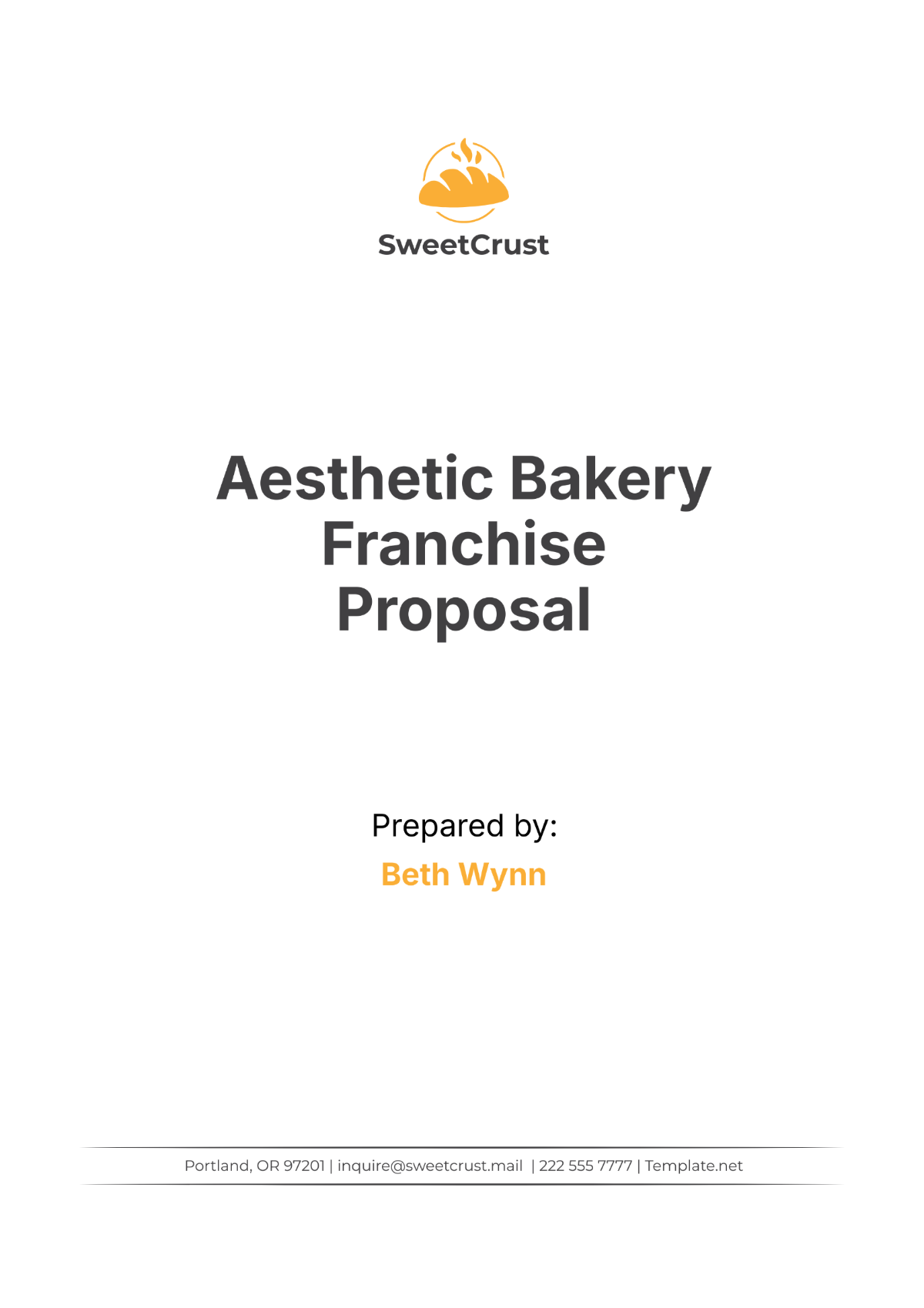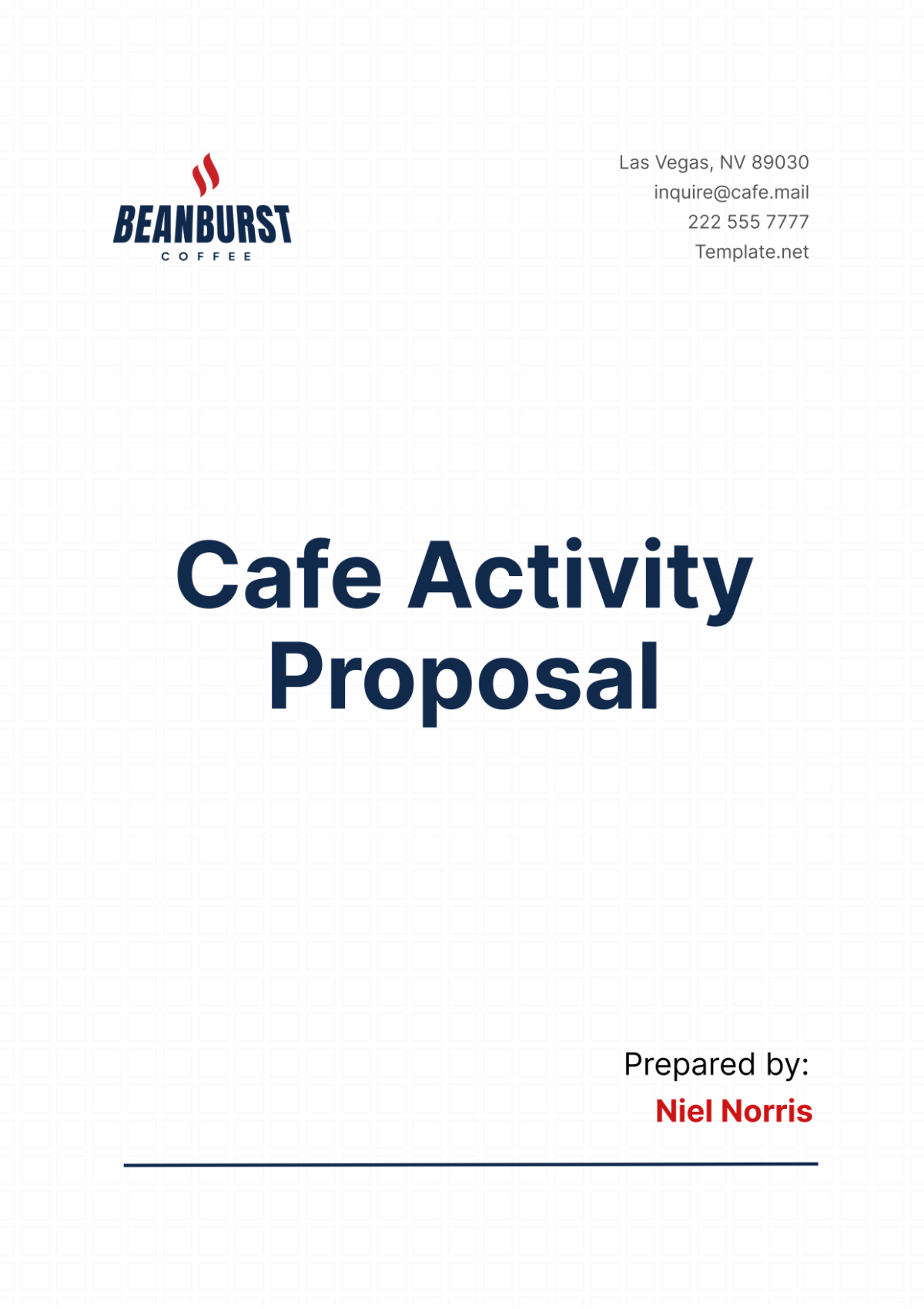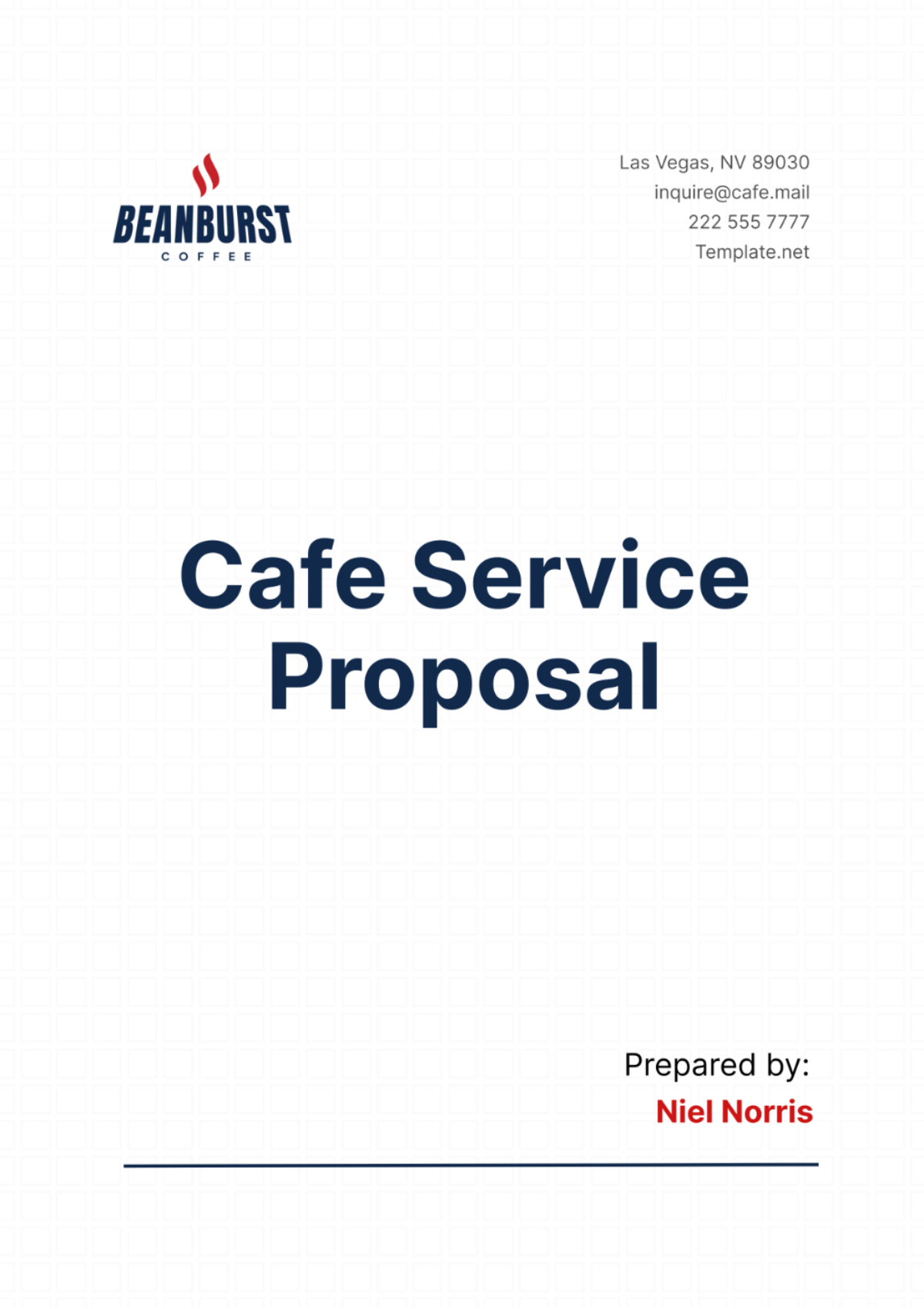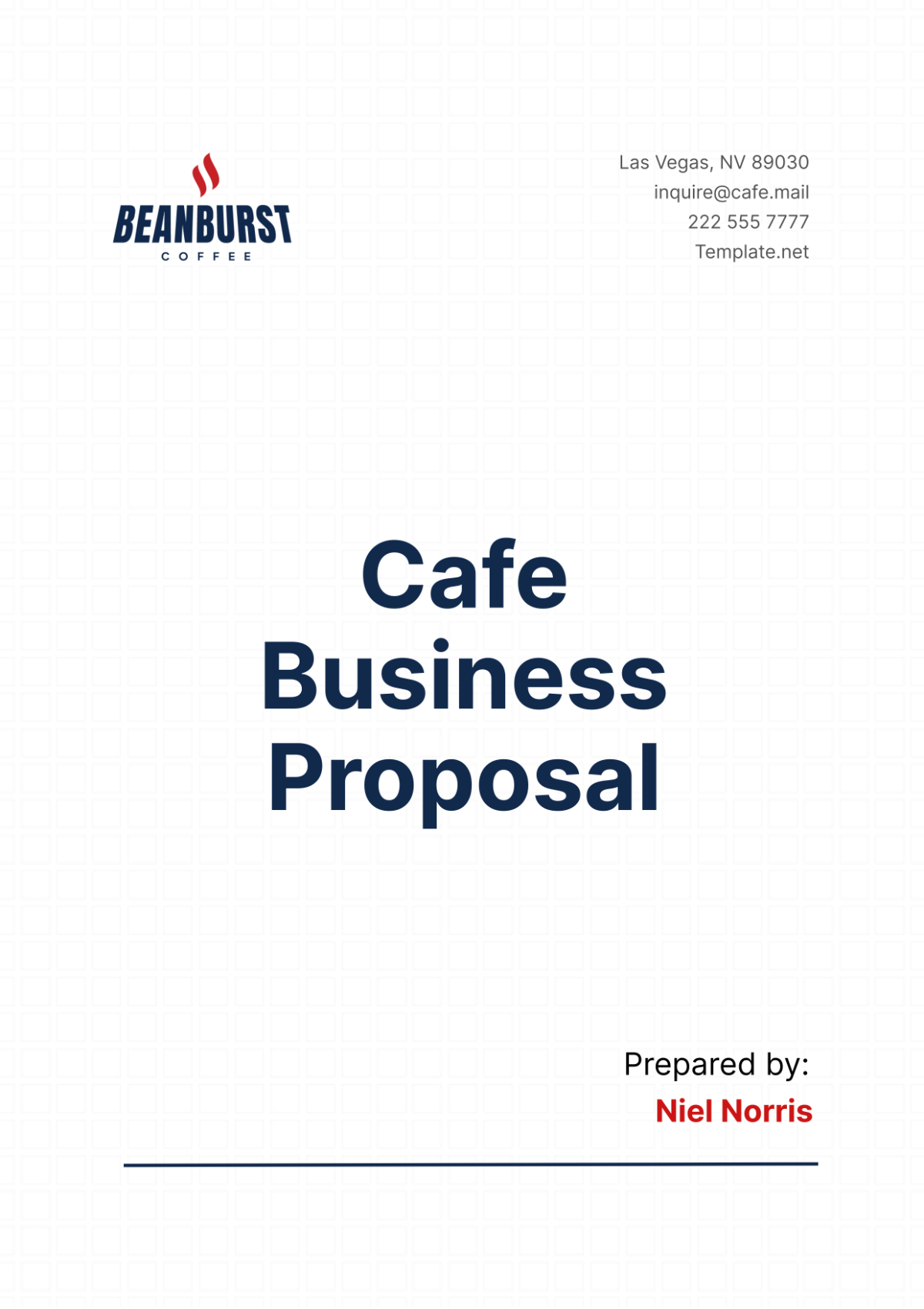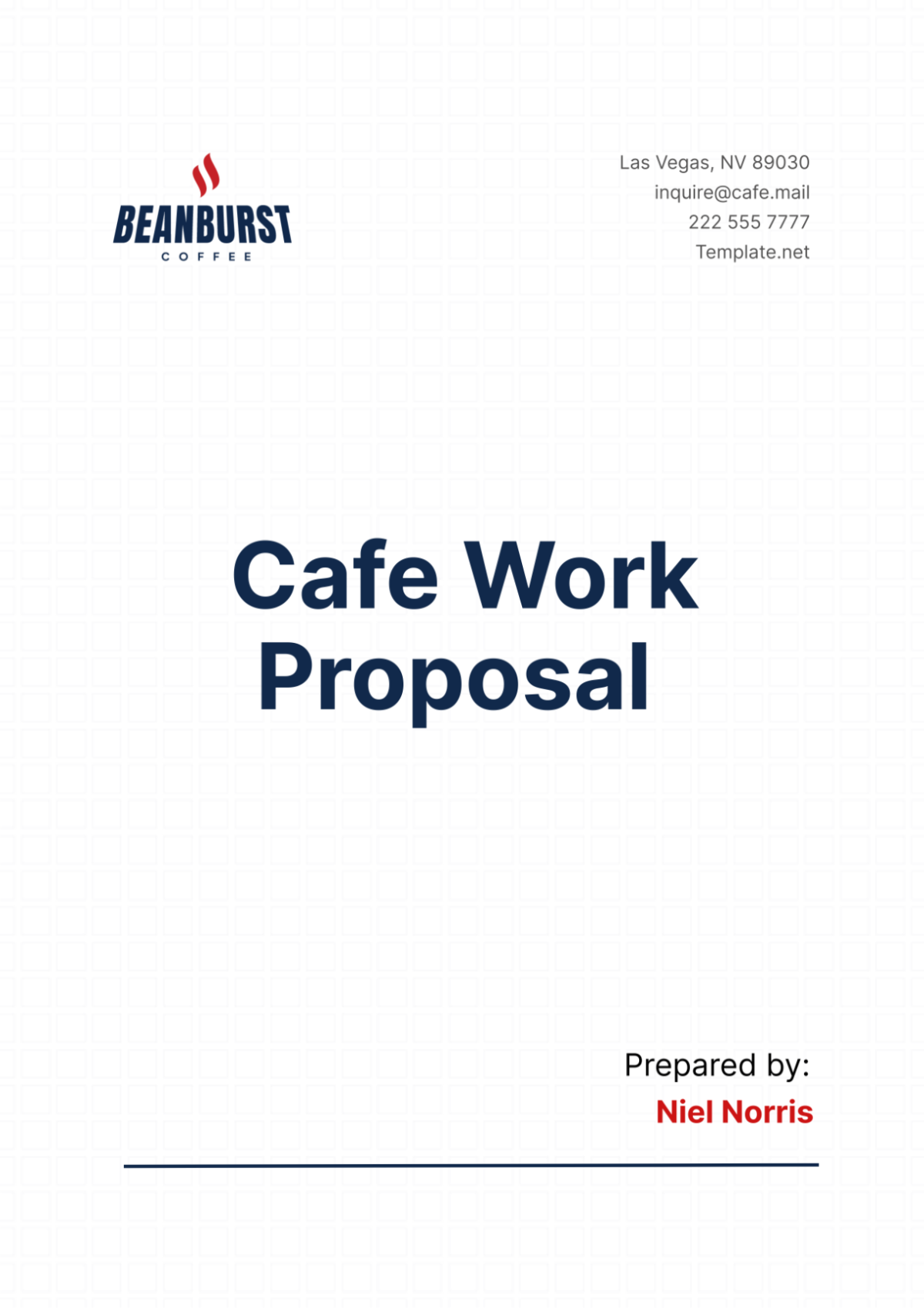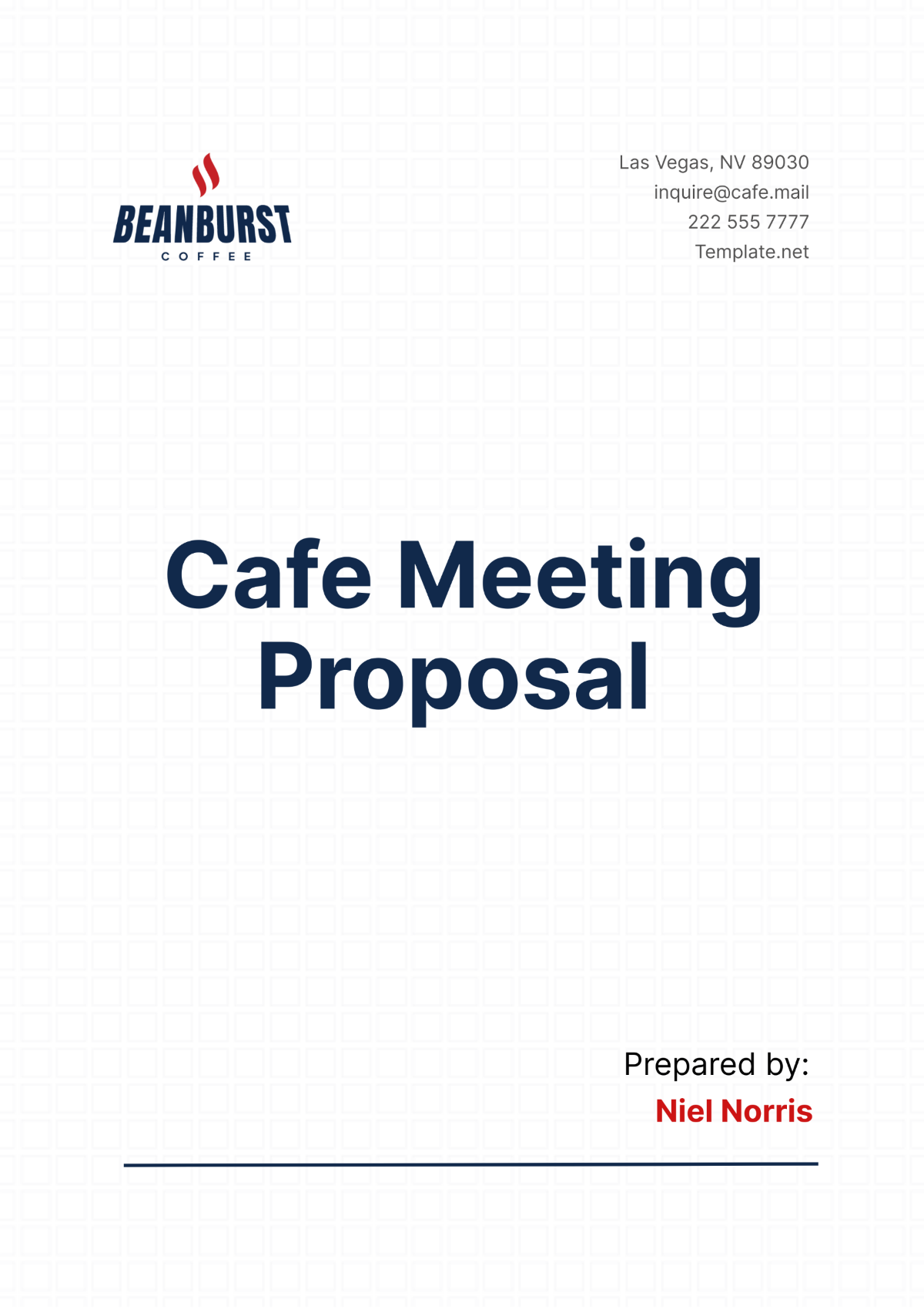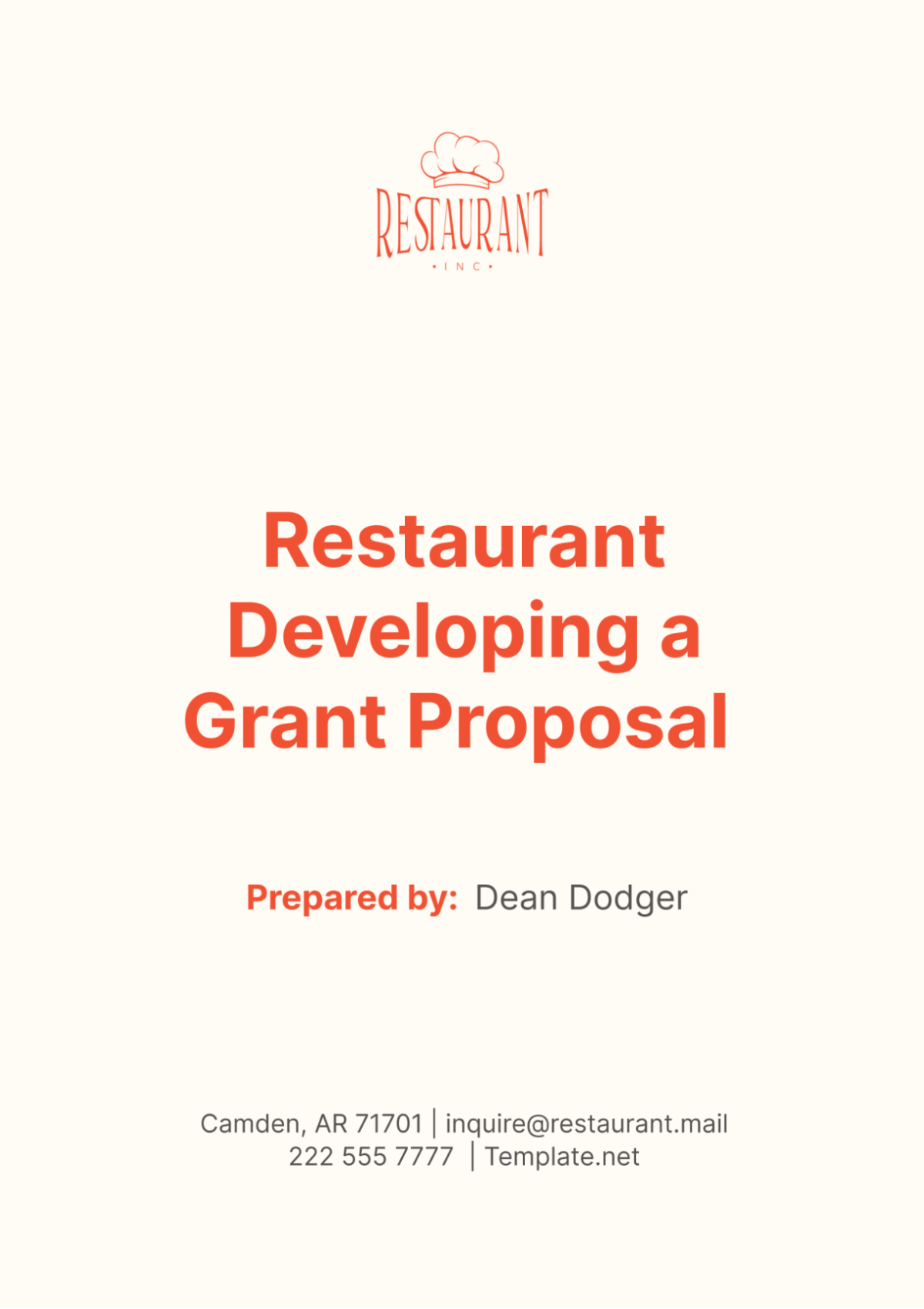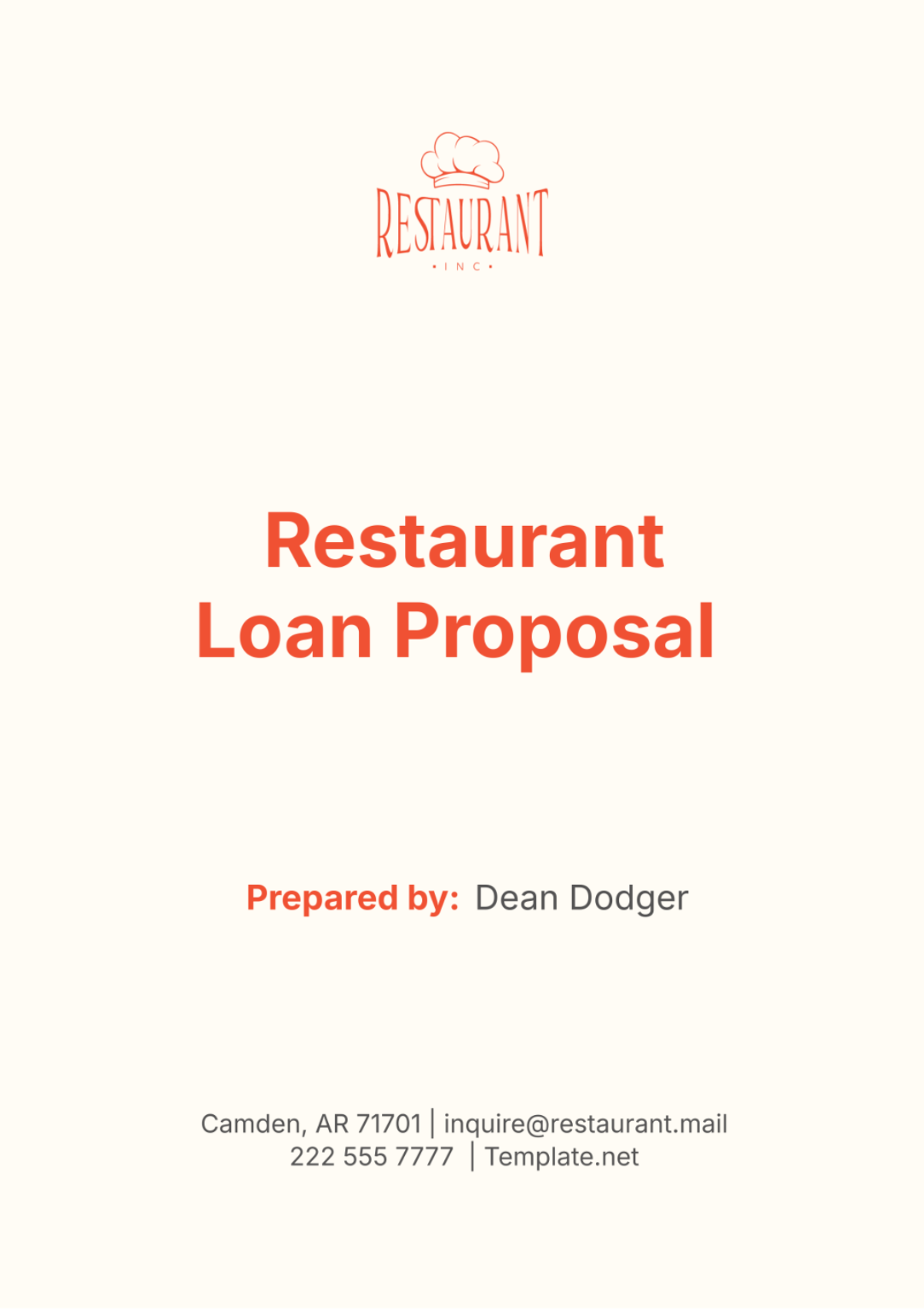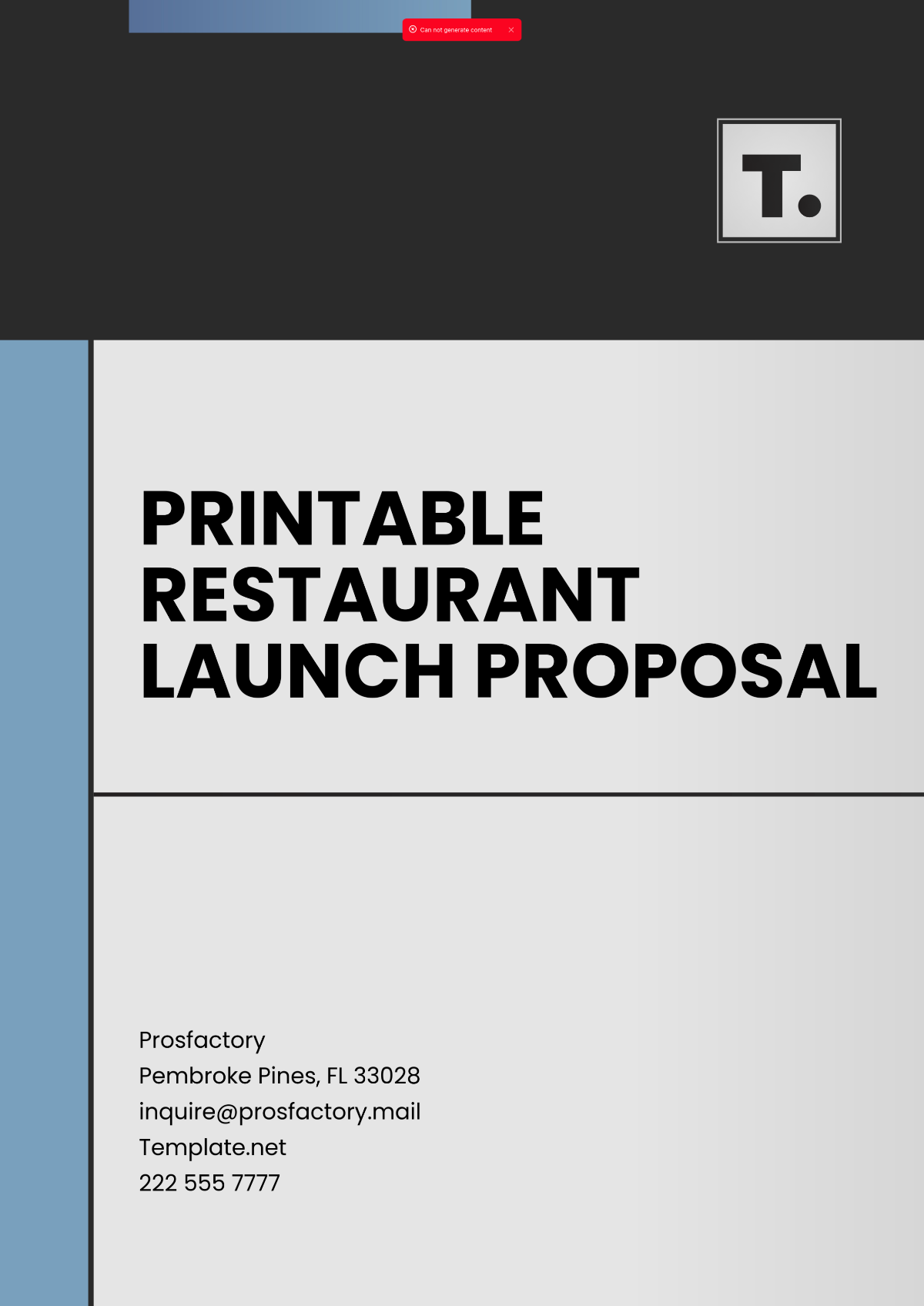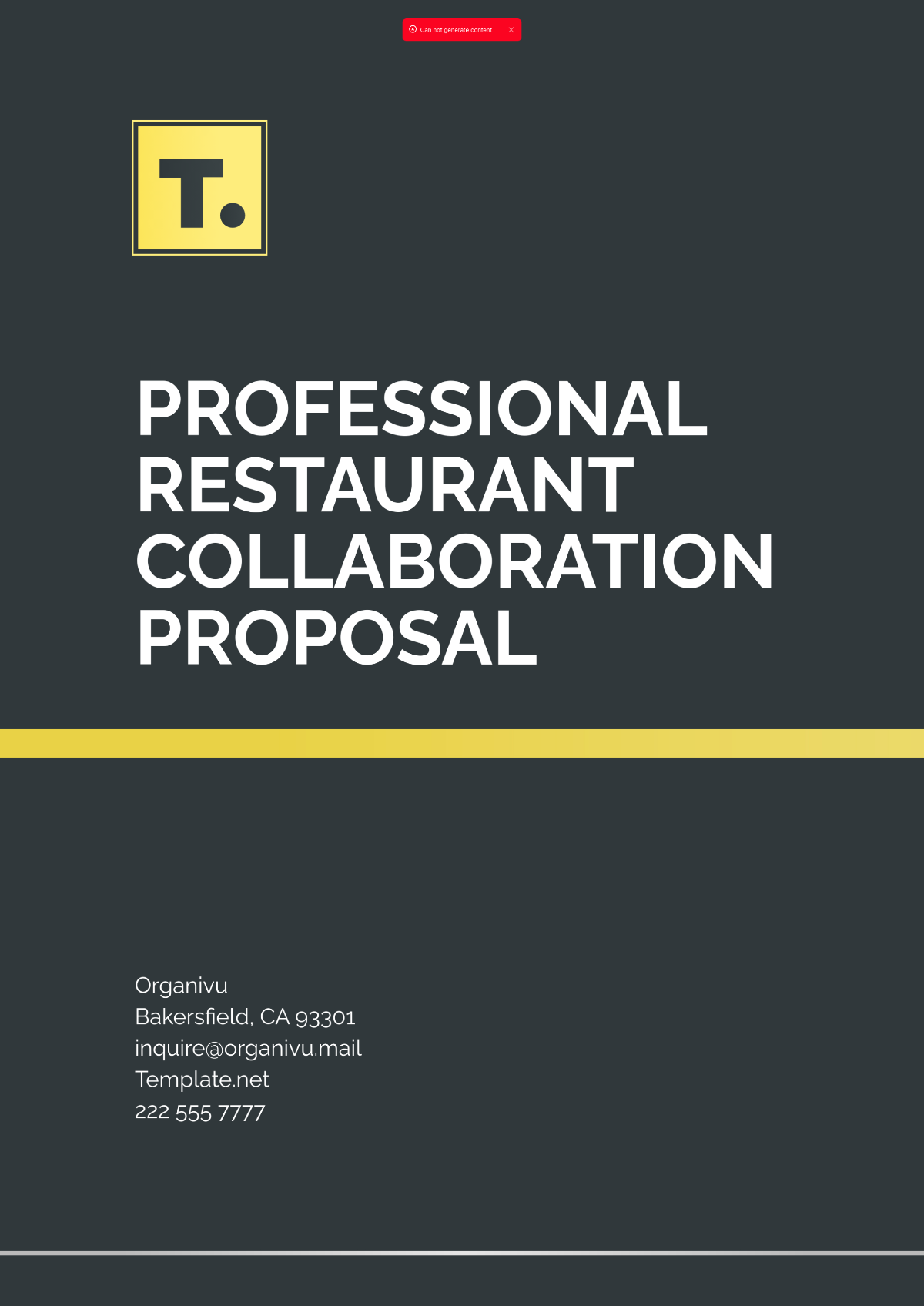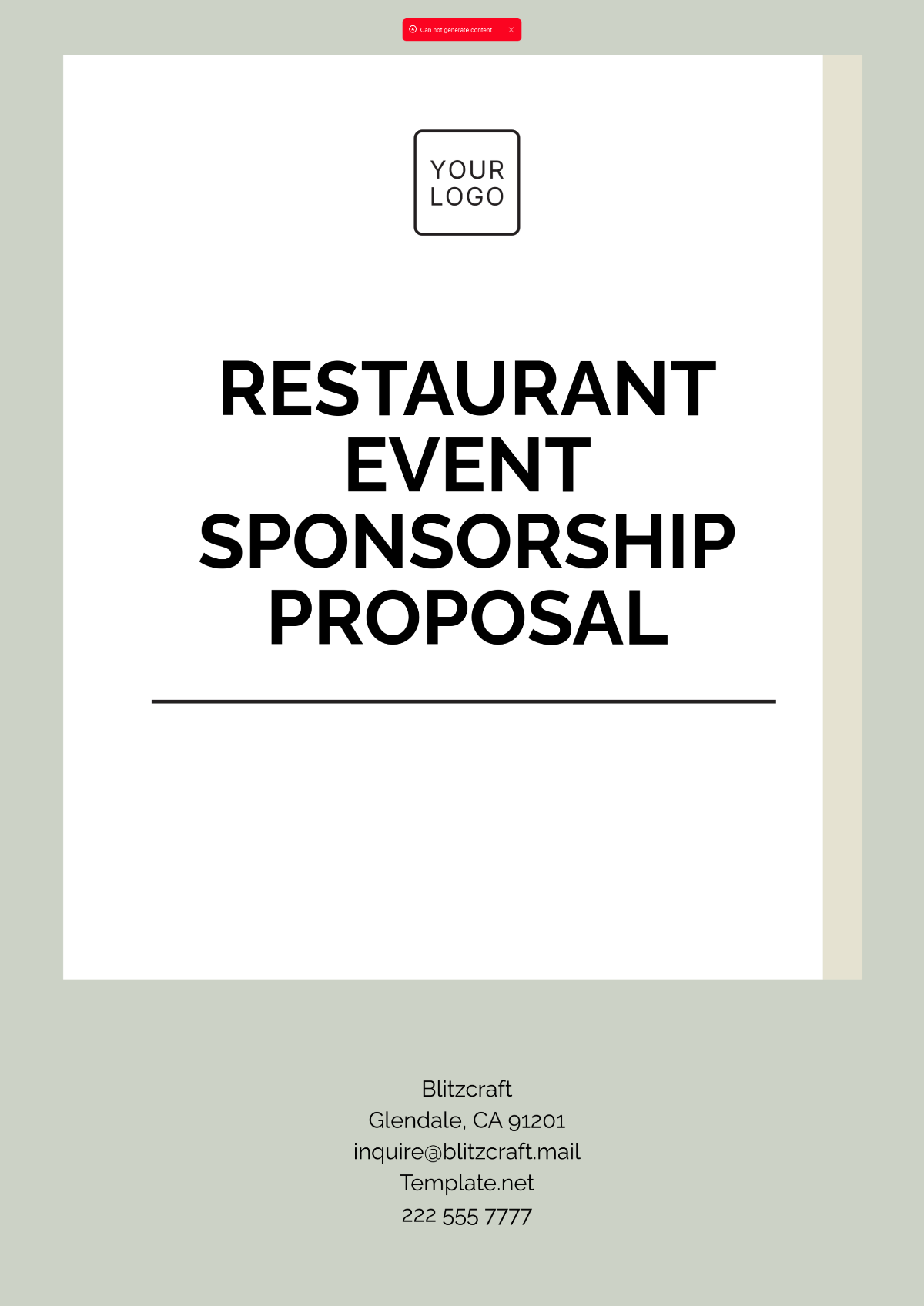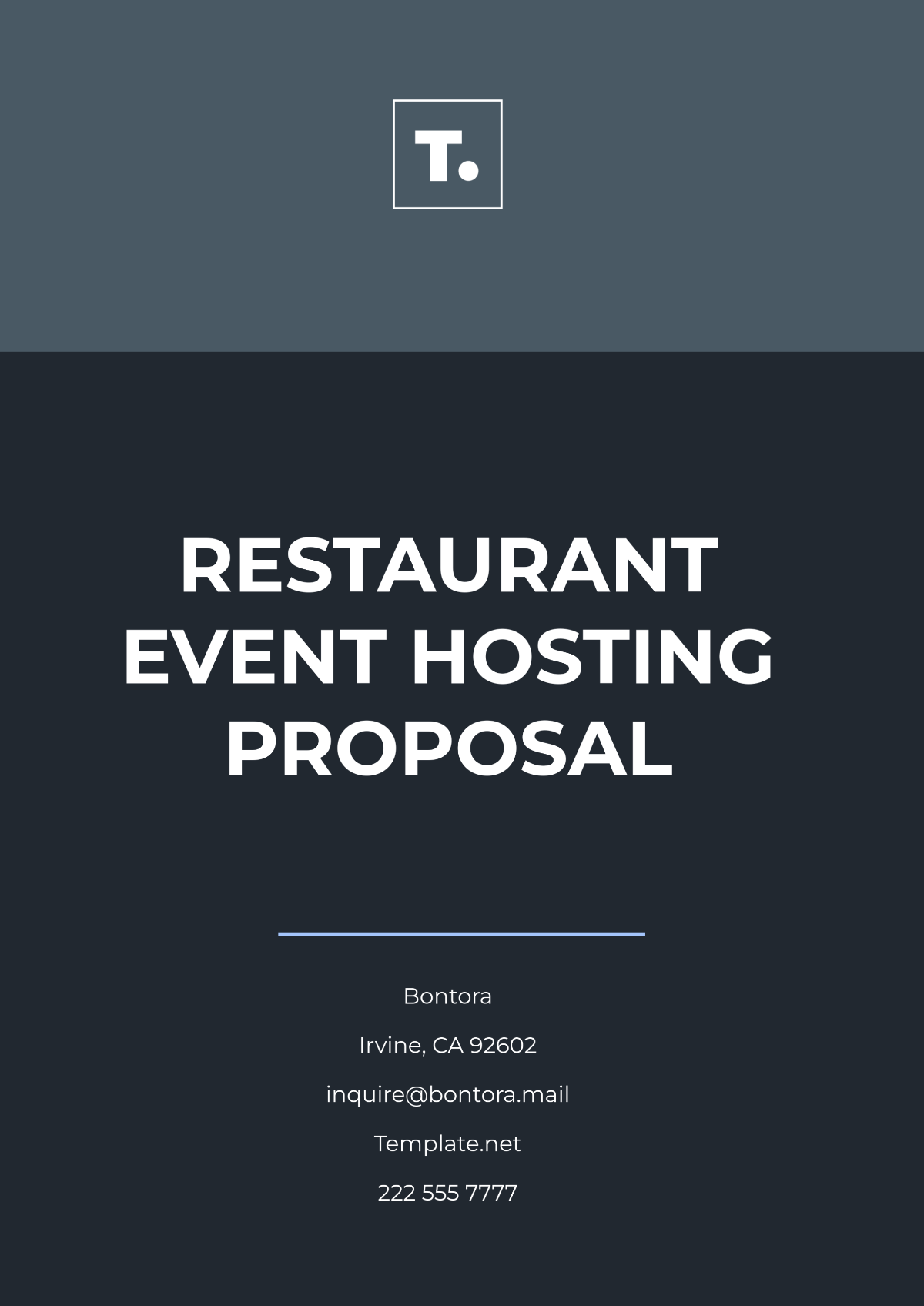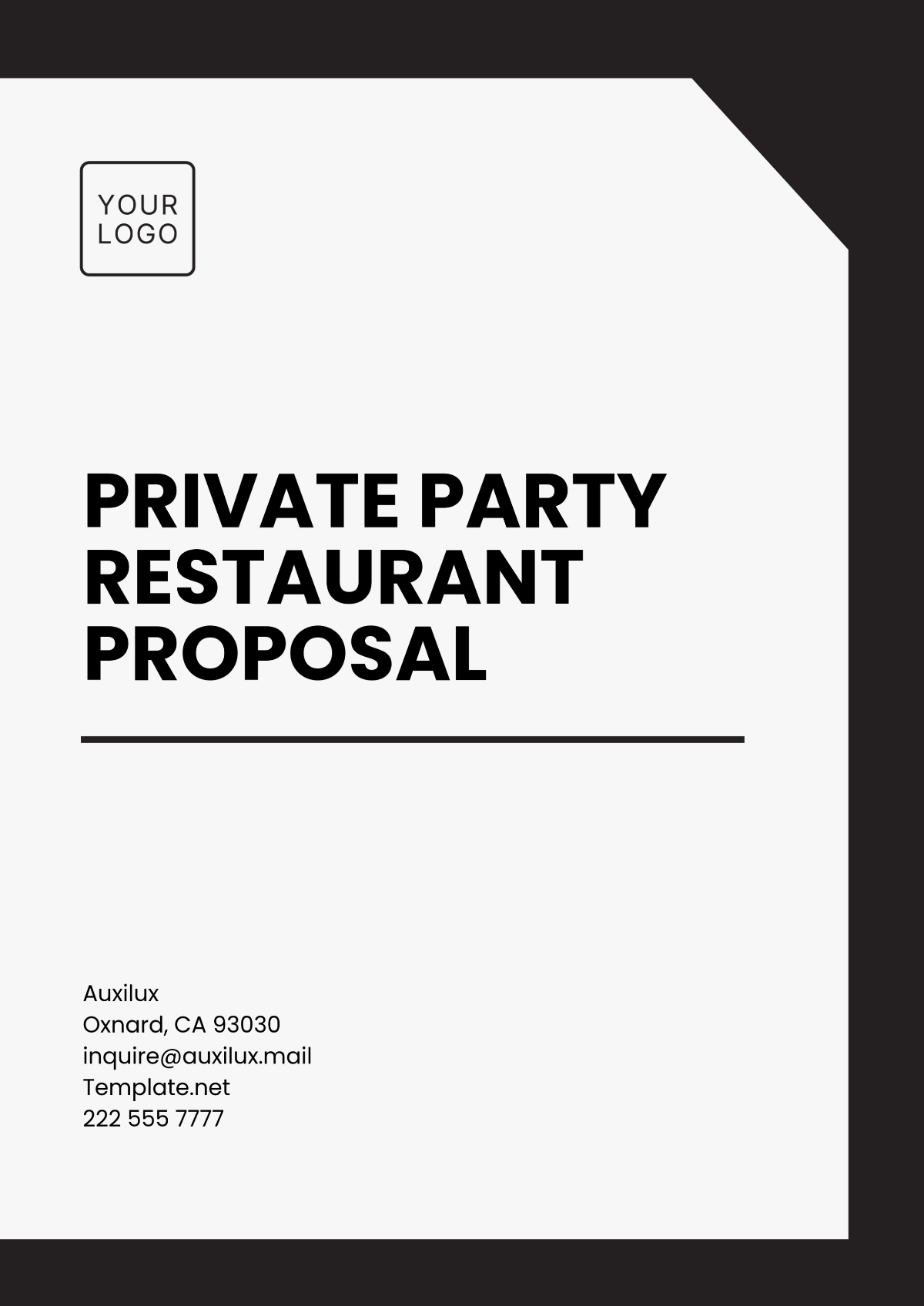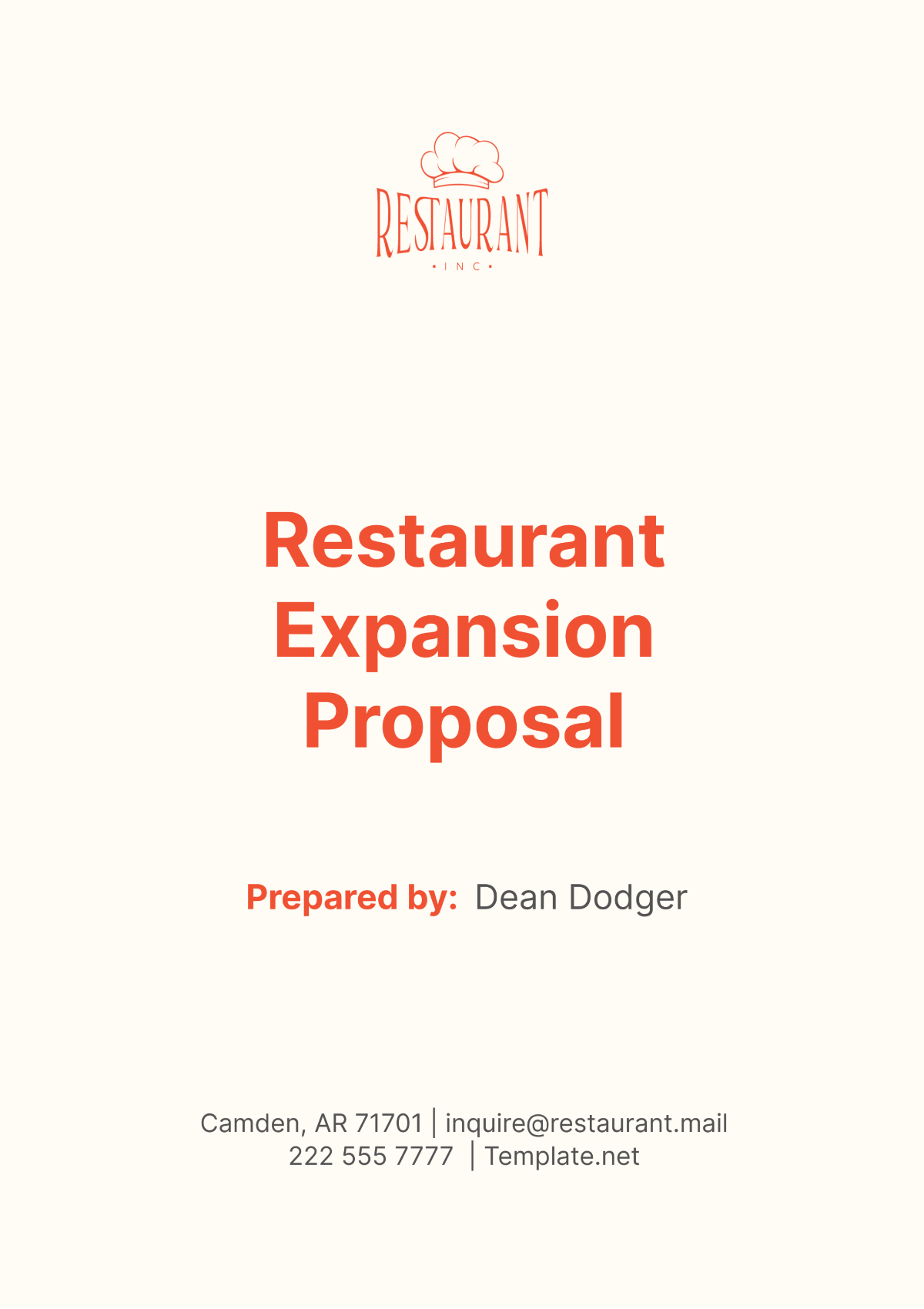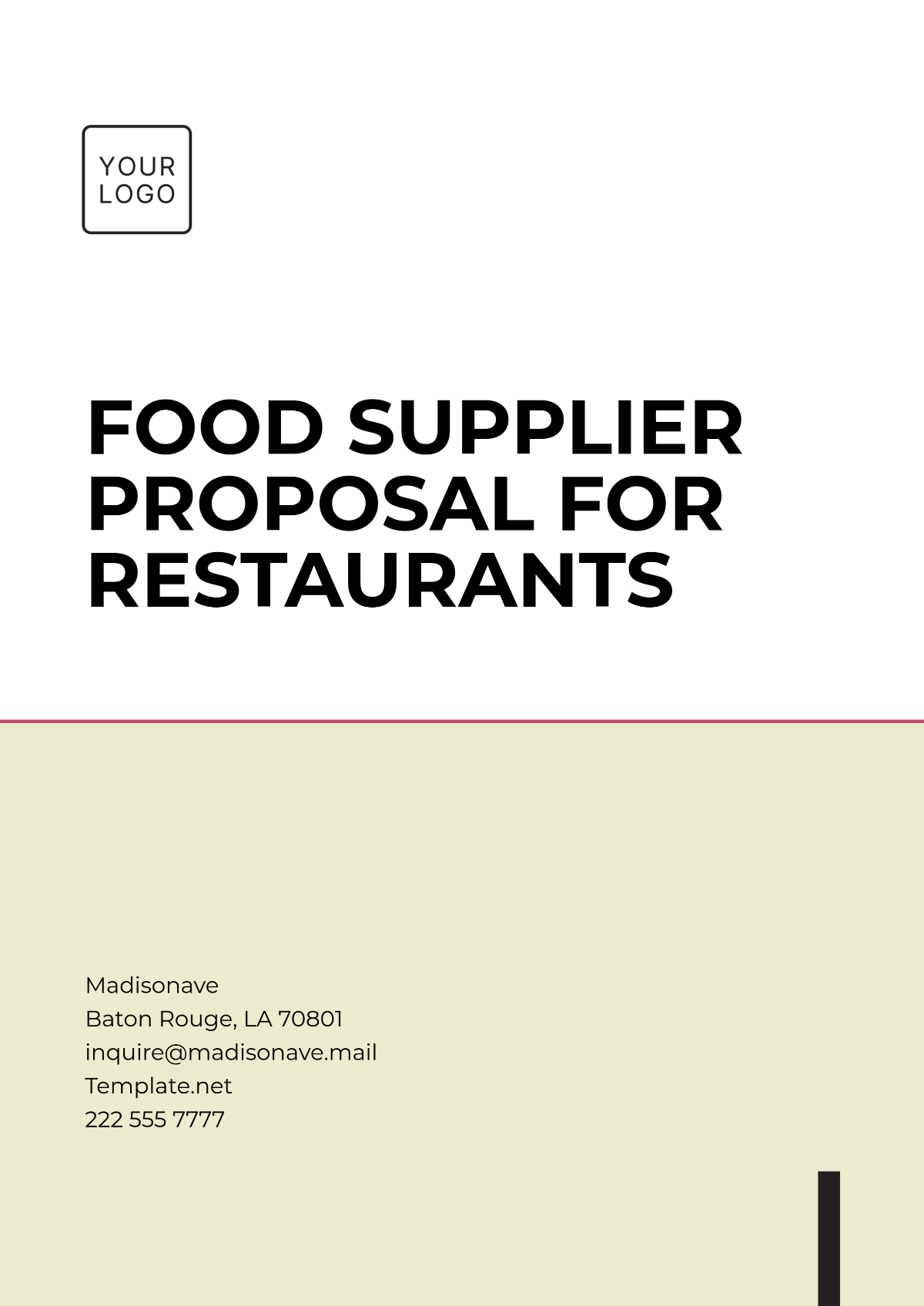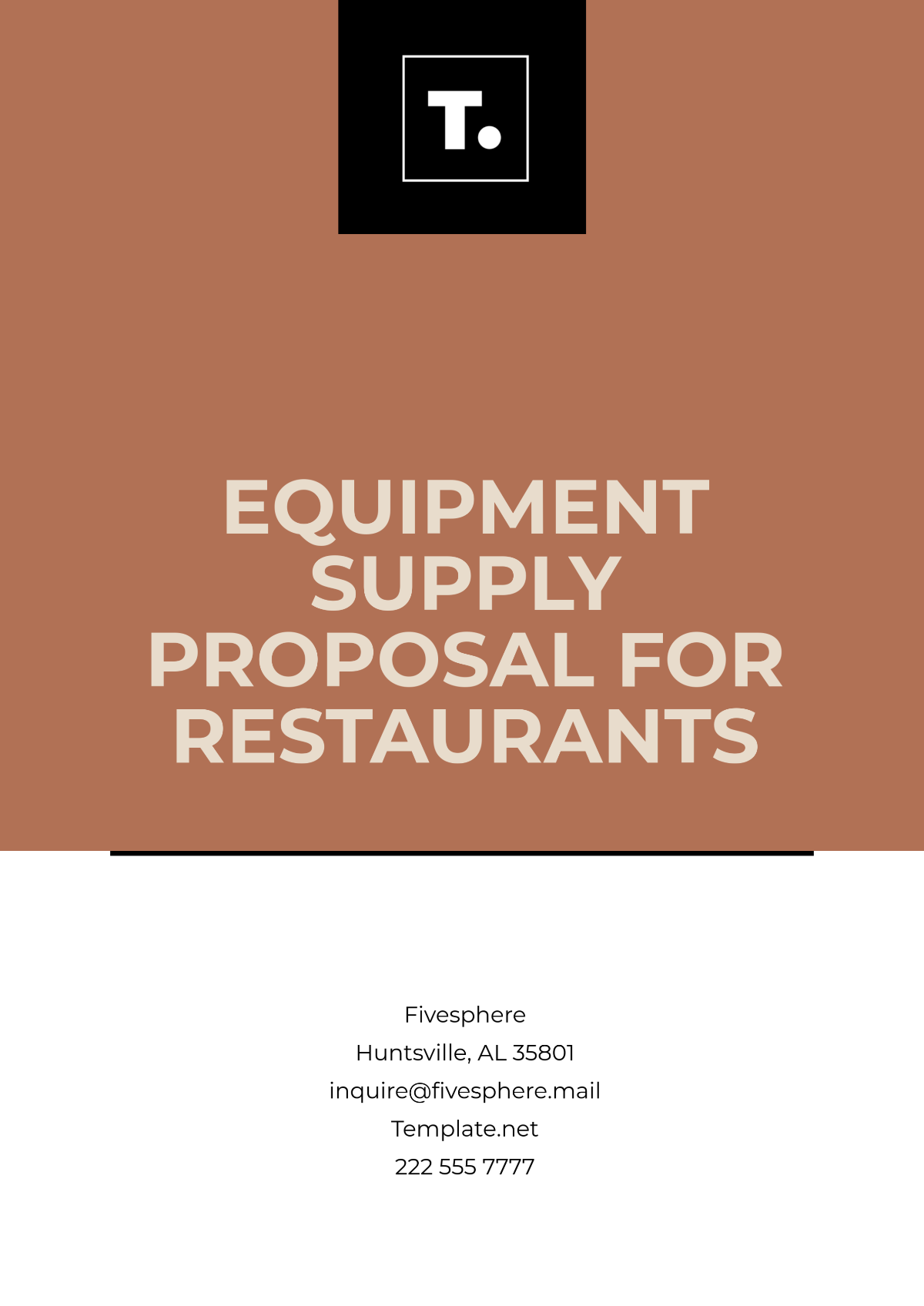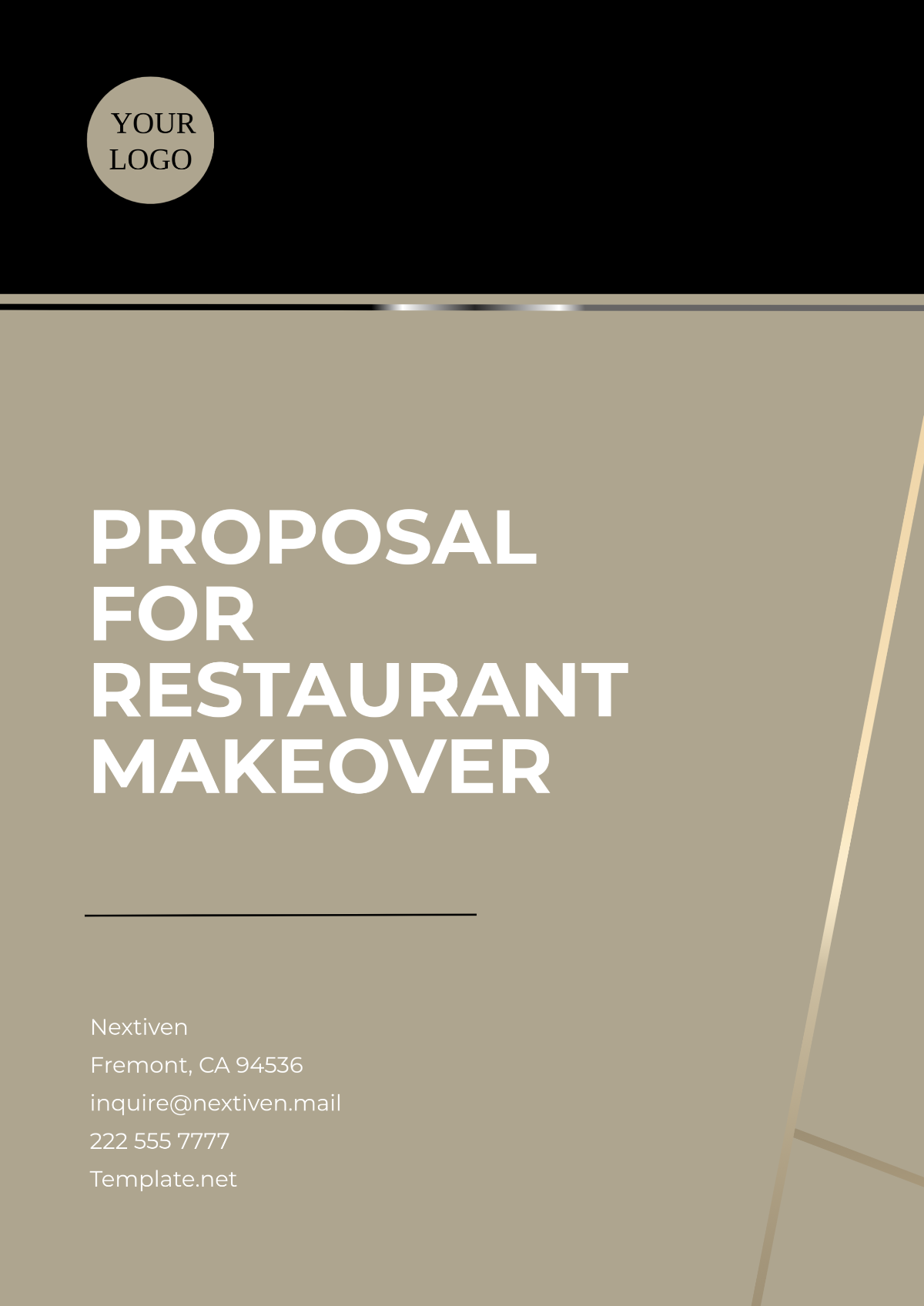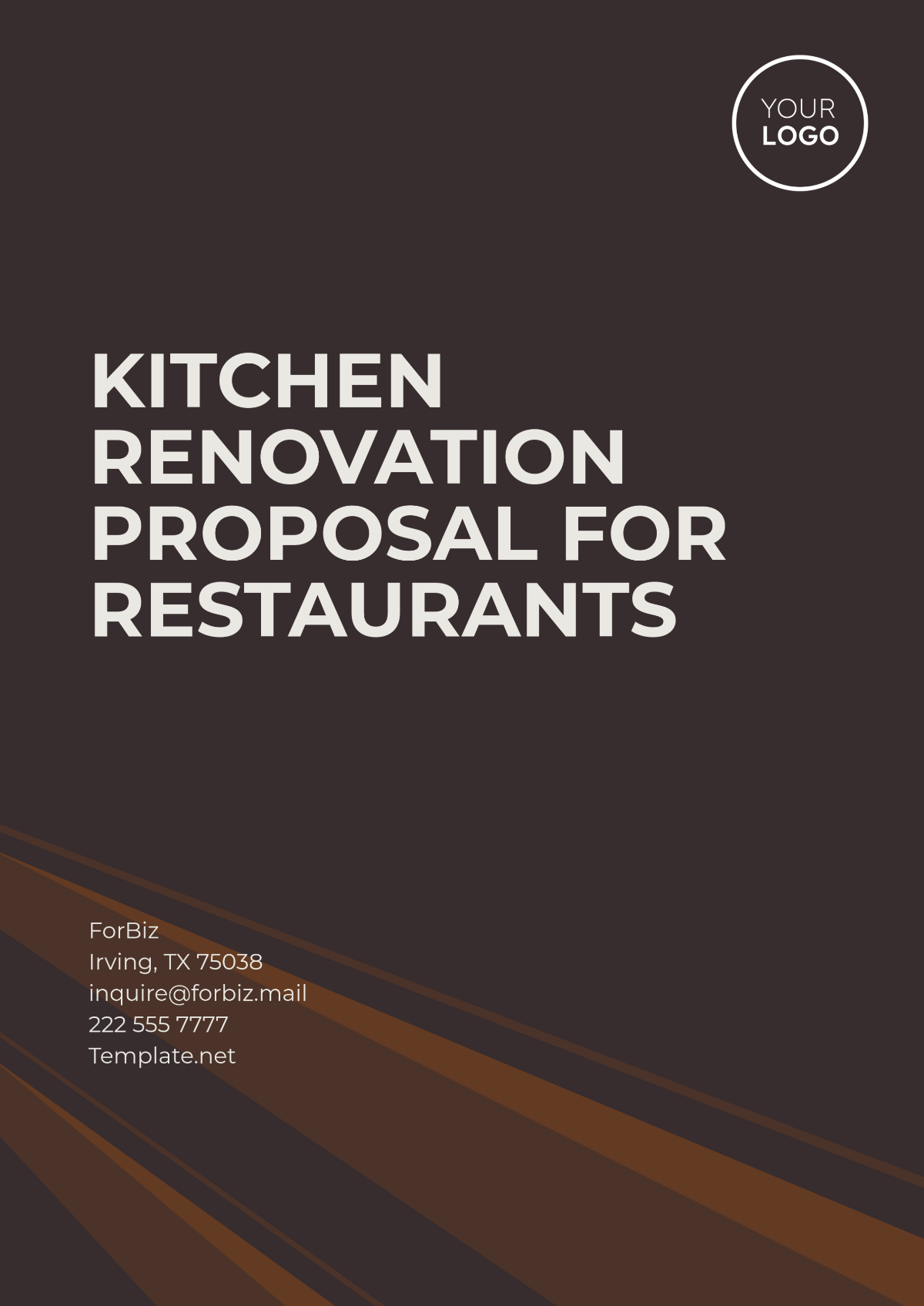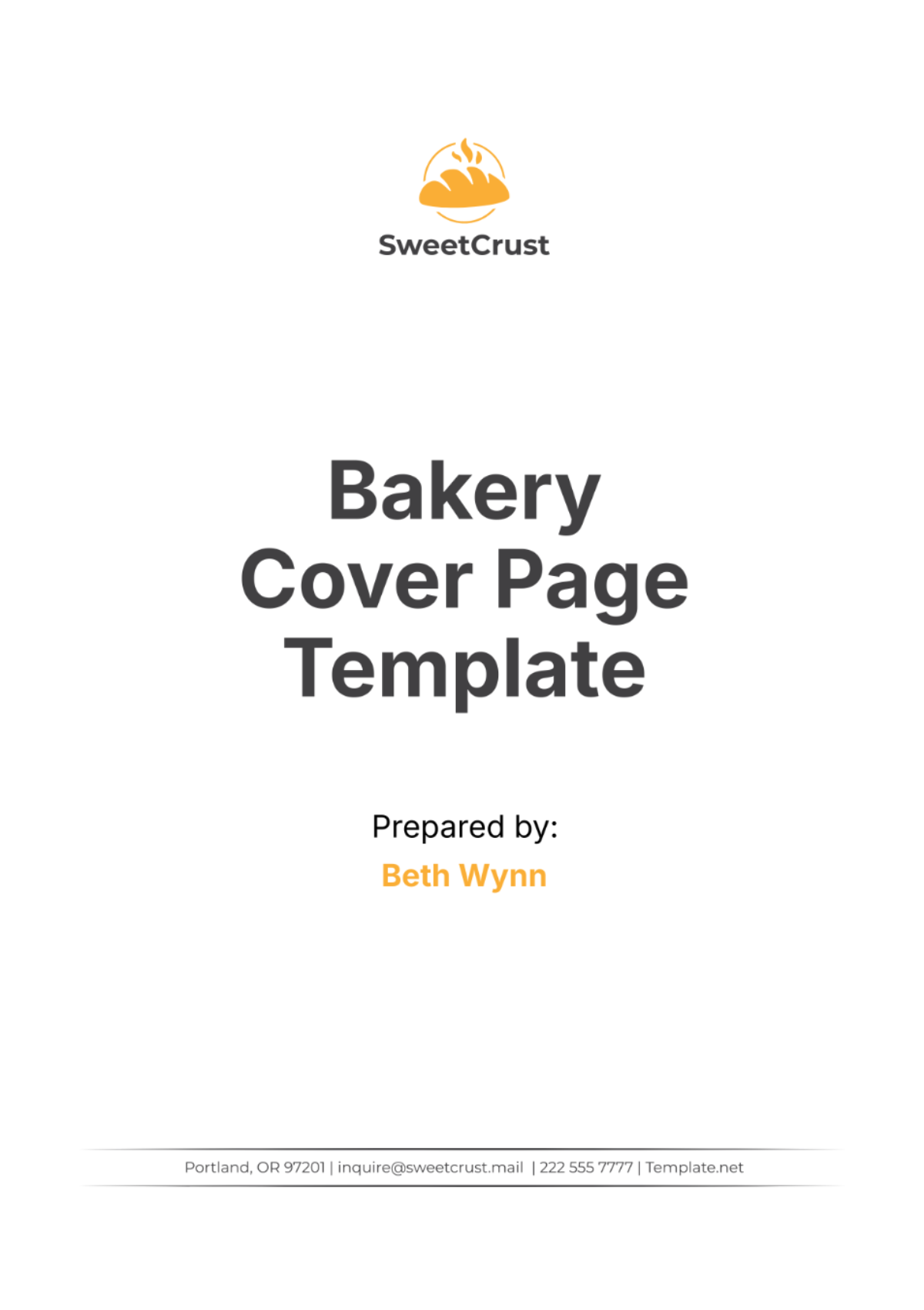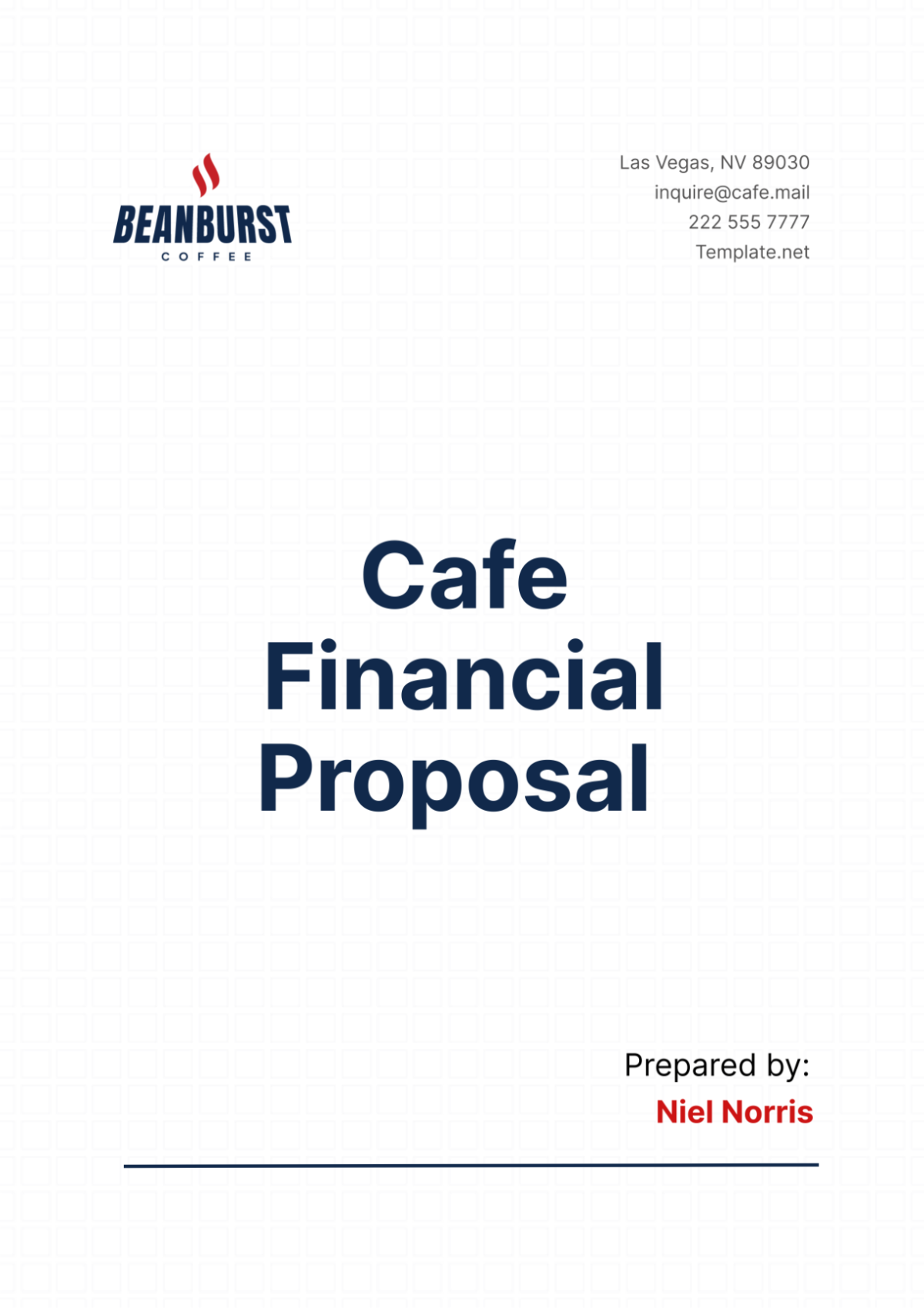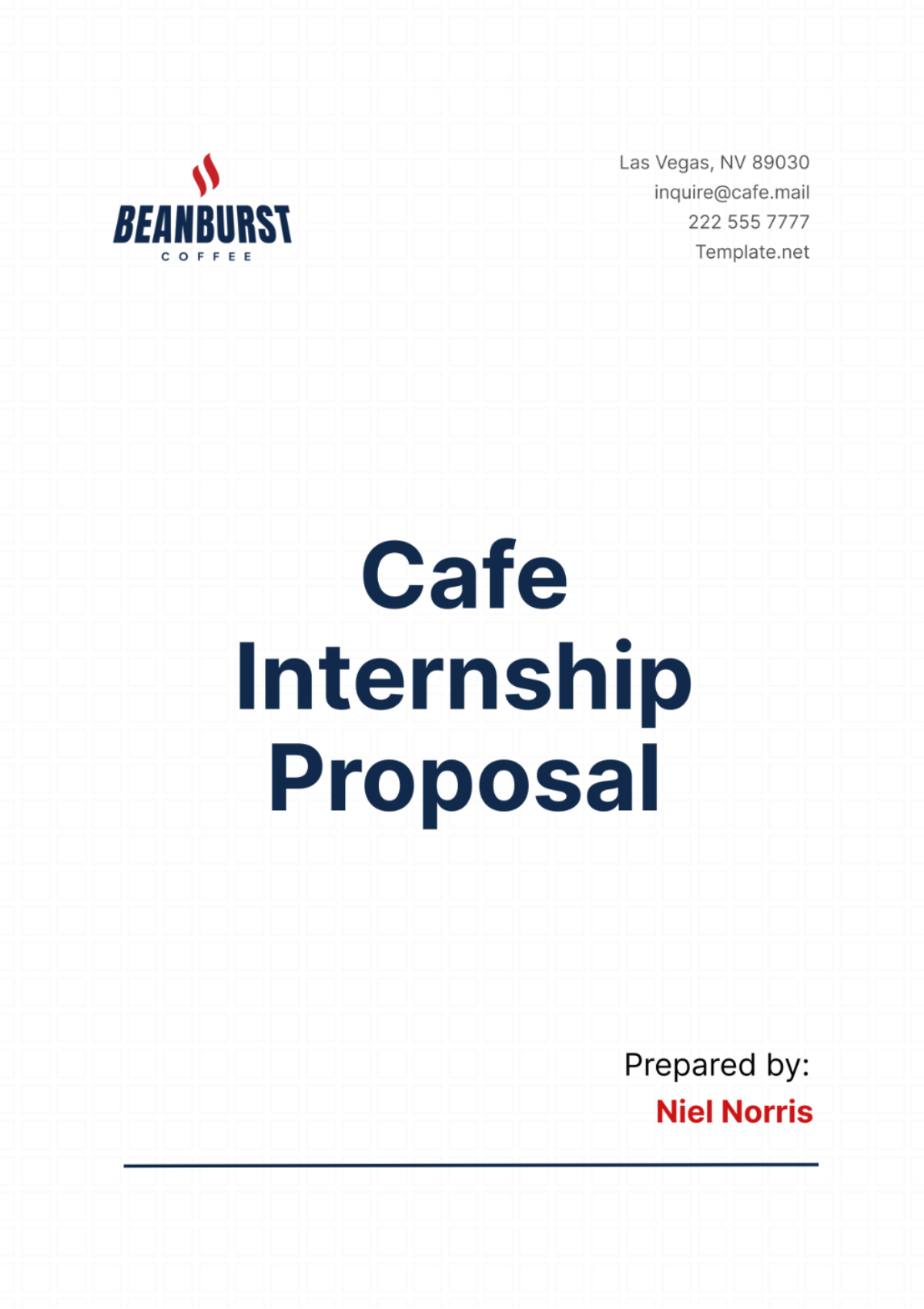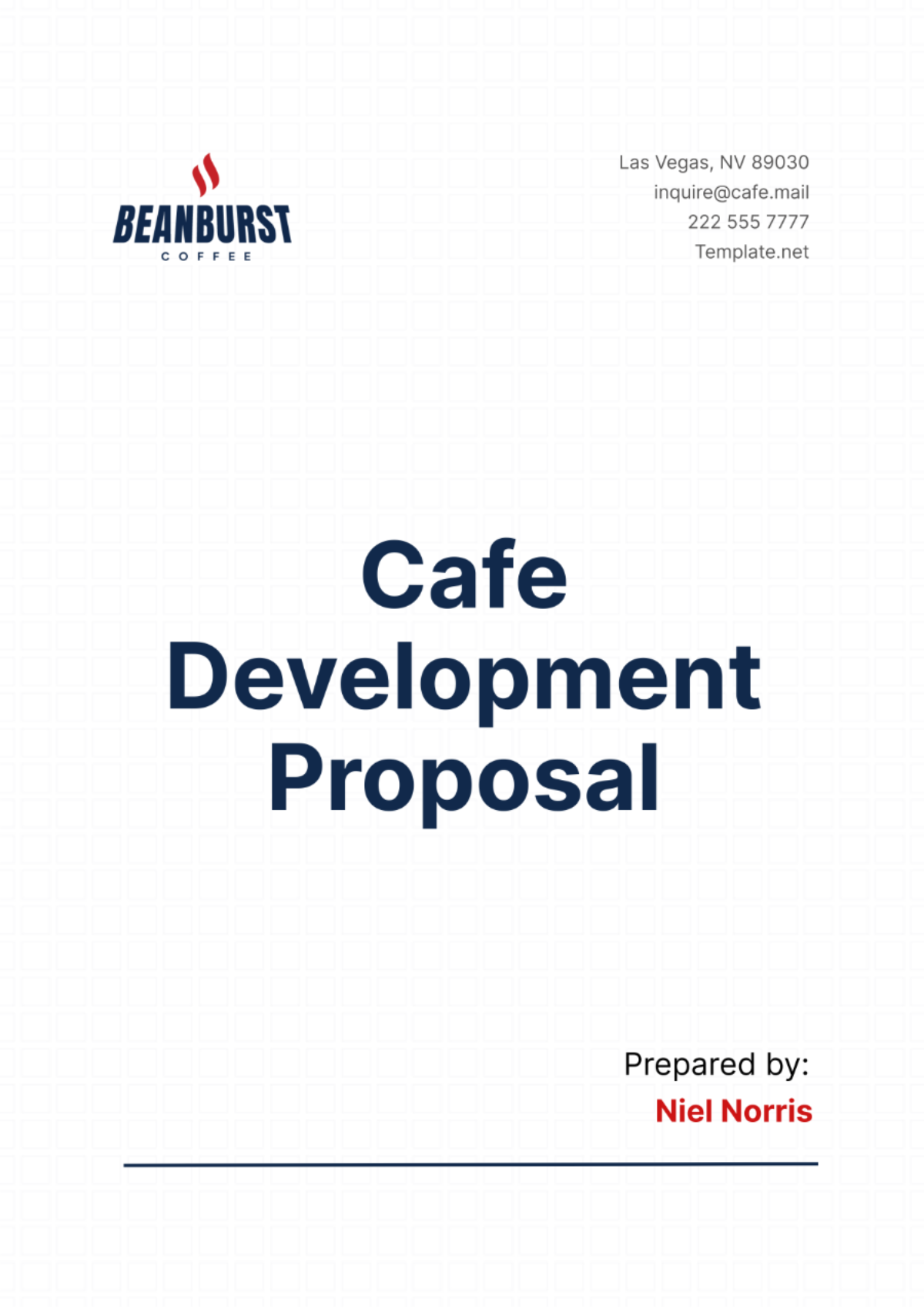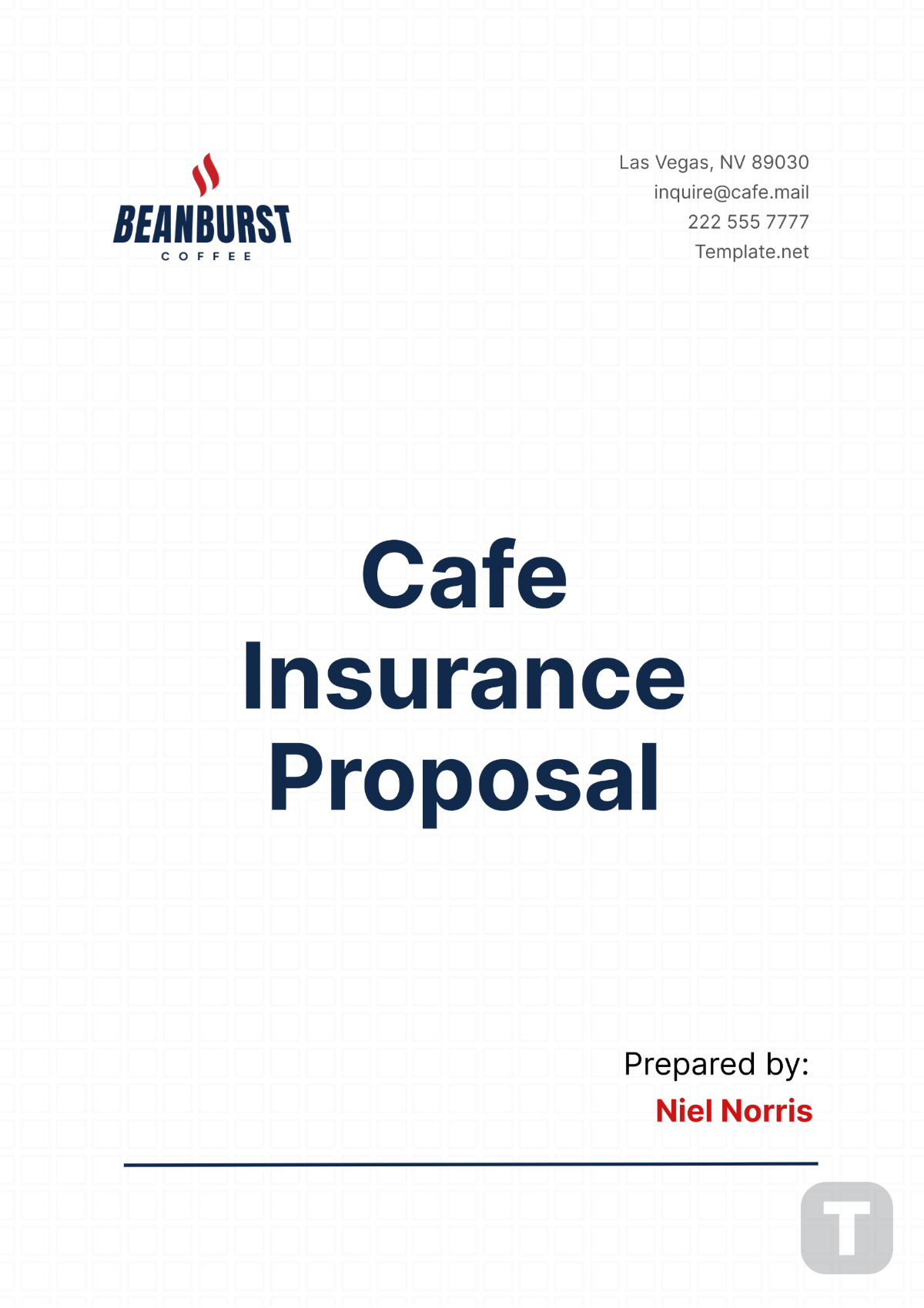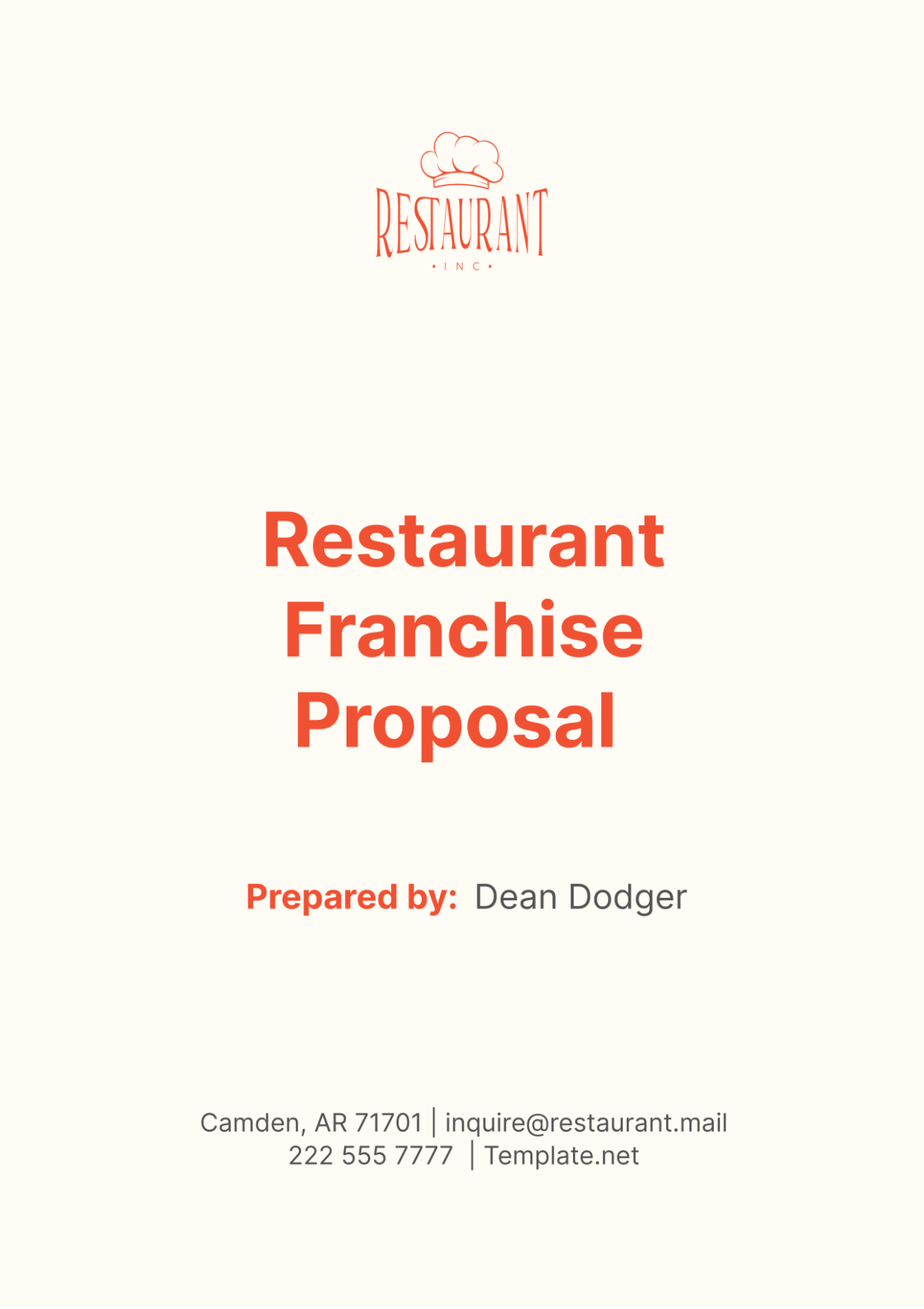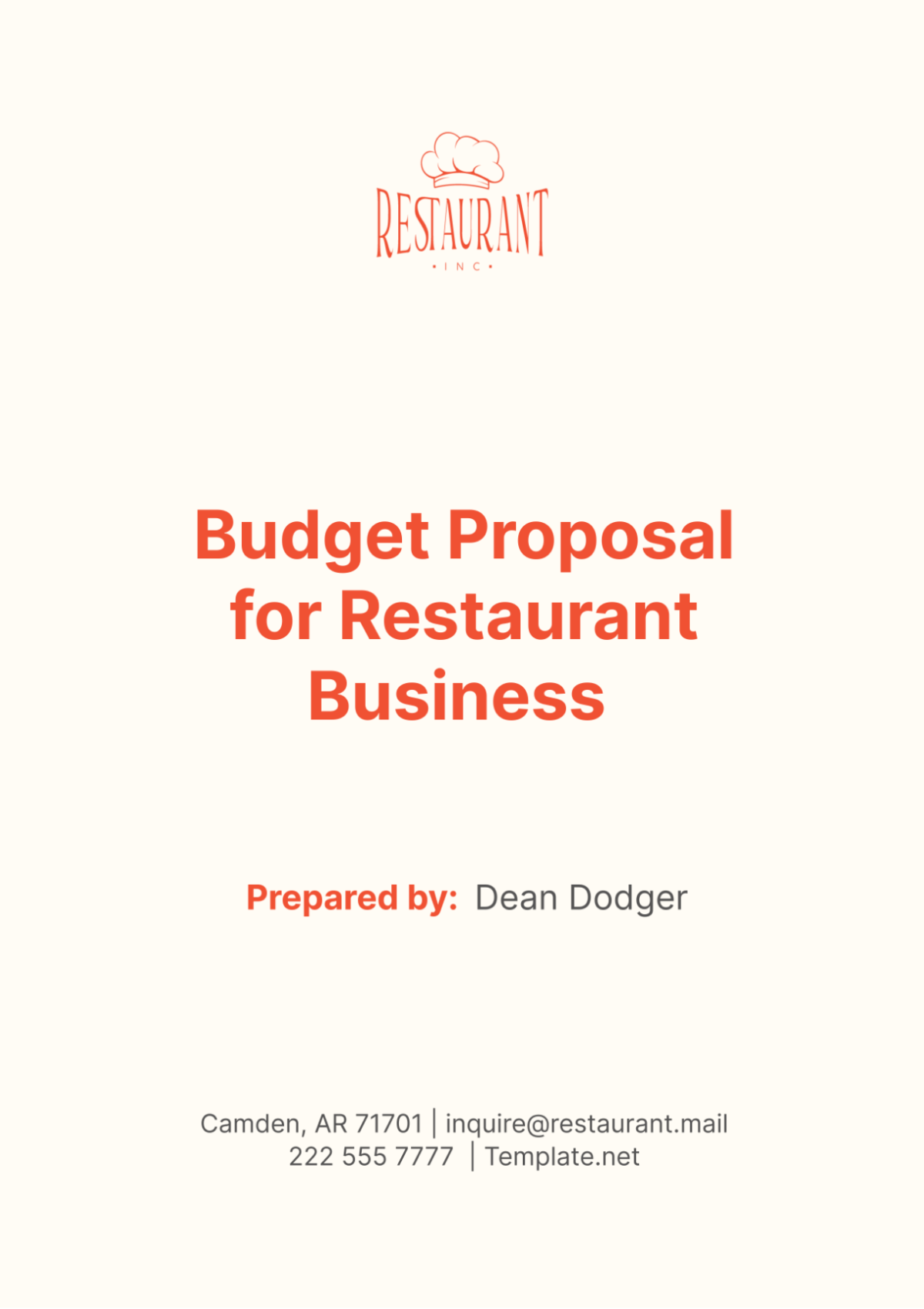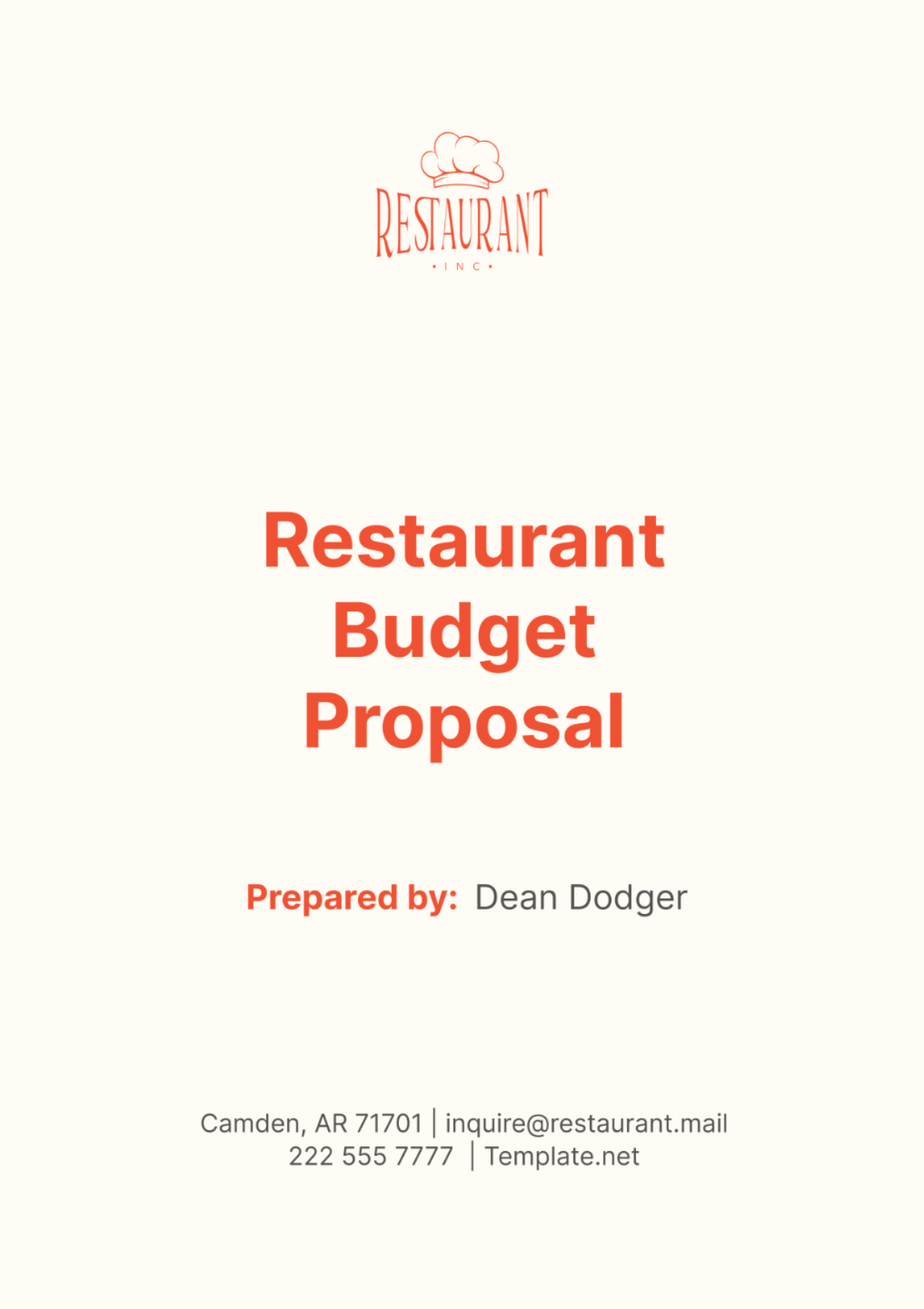Cafe Development Proposal
1. Executive Summary
[Your Company Name] Cafe is committed to enhancing its operations, expanding its customer base, and optimizing its resources to achieve sustained growth and profitability. This development proposal outlines a comprehensive strategy to achieve these goals, focusing on key areas such as market analysis, operational improvements, marketing strategies, financial planning, and community engagement. By implementing the proposed initiatives, [Your Company Name] Cafe aims to strengthen its market position, increase revenue, and provide exceptional value to its customers.
2. Introduction
The purpose of this development proposal is to present a strategic plan for the growth and improvement of [Your Company Name] Cafe. This plan is designed to address current challenges, leverage opportunities, and set a clear path for future success. The proposal includes an in-depth analysis of the market, detailed action plans for various operational aspects, and financial projections to support the proposed initiatives.
3. Market Analysis
Market Overview
The cafe industry has experienced remarkable growth over the past decade, fueled by increasing consumer demand for specialty beverages and unique dining experiences. This trend reflects broader shifts in consumer preferences toward high-quality, artisanal products and environments that provide more than just a place to eat or drink but a lifestyle experience. According to market research, the global cafe market is poised for continued expansion, with a projected compound annual growth rate (CAGR) of 4.5% over the next five years. This growth is driven by several factors, including the proliferation of coffee culture, the rise of third-wave coffee movements, and an increasing appreciation for premium food and beverage options.
Consumers are increasingly seeking cafes that offer more than just food and drink; they want spaces that provide comfort, a sense of community, and a unique ambiance. This demand has led to the emergence of cafes that emphasize quality, sustainability, and innovative offerings. Additionally, technological advancements such as mobile ordering and delivery services have further fueled market growth by making it easier for consumers to access their favorite cafes.
Target Market
[Your Company Name] Cafe targets a diverse customer base, recognizing the varying needs and preferences of different demographic groups. Understanding these segments is crucial for tailoring services and marketing efforts effectively.
Young Professionals
Young professionals seek a comfortable and conducive environment for both work and socializing. They value high-speed internet, ample seating, and a menu that includes both quick bites and more substantial meals. Offering a space that caters to remote workers with power outlets and quiet areas can attract this demographic.
Students
Students are looking for a study-friendly environment with affordable, nutritious food options. Providing discounts for students, loyalty programs, and group study spaces can make the cafe a popular spot for this demographic. Ensuring a calm and focused atmosphere with sufficient seating can help attract student groups and study sessions.
Families and Casual Diners
Families and casual diners are looking for a welcoming and relaxed atmosphere where they can enjoy quality time together. A menu that includes child-friendly options, comfortable seating, and a safe environment is essential. Hosting family-friendly events and activities can also help attract this group.
Health-Conscious Individuals
Health-conscious individuals seek nutritious and organic options that align with their dietary preferences. Offering a menu with vegan, gluten-free, and organic choices can attract this segment. Highlighting the use of locally sourced and sustainable ingredients can further appeal to these consumers.
Competitive Analysis
A thorough analysis of the local competition provides valuable insights into the market landscape and identifies opportunities for differentiation. The local cafe market is characterized by a range of competitors offering various products and services. Key insights from the competitive analysis include:
Specialty Coffee and Artisanal Food Items:
Competitors offer a diverse range of specialty coffee drinks, from pour-overs and cold brews to latte art. Artisanal food items such as gourmet sandwiches, pastries, and salads are also popular.
[Your Company Name] Cafe can differentiate itself by offering unique signature drinks and exclusive food items that reflect local flavors and ingredients.
Price Points:
Price points vary significantly, with premium cafes charging higher prices for quality and ambiance. Budget-friendly options are also available, catering to a more cost-conscious demographic.
Implementing a pricing strategy that balances affordability with perceived value can attract a broad customer base without compromising on quality.
Loyalty Programs and Community Engagement:
Successful competitors often have robust loyalty programs and engage actively with their local communities through events, sponsorships, and partnerships.
Developing a compelling loyalty program and participating in community initiatives can enhance customer loyalty and brand visibility.
SWOT Analysis
A SWOT analysis helps identify [Your Company Name] Cafe’s strengths, weaknesses, opportunities, and threats. This analysis is crucial for strategic planning and ensuring the cafe can effectively leverage its advantages while addressing potential challenges.
Strengths | Weaknesses |
|---|---|
Strong brand identity | Limited menu variety |
Loyal customer base | Inconsistent operational efficiency |
Prime location | Limited marketing efforts |
High-quality products | High operational costs |
Opportunities | Threats |
|---|---|
Expanding menu offerings | Increased competition |
Leveraging digital marketing | Economic downturns |
Community engagement initiatives | Rising ingredient costs |
Introducing delivery services | Changes in consumer preferences |
4. Development Plan
Operational Improvements
1. Enhancing Customer Service
Objective: To provide exceptional customer service that enhances customer satisfaction and loyalty.
Action Plan:
Implement regular training programs focusing on customer service skills.
Establish a feedback system to continuously monitor and improve service quality.
Introduce a customer loyalty program to reward repeat customers.
2. Optimizing Food and Beverage Preparation
Objective: To ensure consistent quality and efficiency in food and beverage preparation.
Action Plan:
Standardize recipes and preparation procedures.
Invest in high-quality kitchen equipment to improve efficiency.
Implement a quality control system to monitor product standards.
Menu Expansion
1. Introducing New Menu Items
Objective: To attract new customers and increase repeat visits by offering a diverse menu.
Action Plan:
Conduct market research to identify popular food and beverage trends.
Introduce seasonal and specialty items to keep the menu exciting.
Offer a variety of dietary options, including vegan, gluten-free, and organic choices.
2. Menu Pricing Strategy
Objective: To optimize pricing for profitability while remaining competitive.
Action Plan:
Analyze the cost of goods sold (COGS) to determine appropriate pricing.
Implement dynamic pricing strategies during peak and off-peak hours.
Regularly review and adjust prices based on market conditions and customer feedback.
Marketing and Promotion
1. Digital Marketing Strategy
Objective: To increase online visibility and attract a broader audience.
Action Plan:
Develop a comprehensive social media marketing plan, focusing on platforms like Instagram, Facebook, and Twitter.
Create engaging content, including photos, videos, and customer testimonials.
Use targeted ads to reach potential customers in the local area.
2. Community Engagement
Objective: To build strong relationships with the local community and enhance brand loyalty.
Action Plan:
Partner with local businesses and organizations for cross-promotional events.
Sponsor community events and participate in local fairs and markets.
Host in-cafe events such as live music nights, art exhibitions, and workshops.
Financial Planning
1. Budget and Financial Projections
Objective: To ensure financial stability and support for the proposed initiatives.
Action Plan:
Develop a detailed budget covering all operational costs, marketing expenses, and capital investments.
Create financial projections for the next five years, including revenue forecasts, expense estimates, and profit margins.
Monitor financial performance regularly and adjust the budget as needed.
Financial Projections | Year 1 | Year 2 | Year 3 | Year 4 | Year 5 |
|---|---|---|---|---|---|
Revenue | $500,000 | $550,000 | $605,000 | $665,500 | $732,050 |
Operating Expenses | $350,000 | $367,500 | $385,875 | $405,169 | $425,428 |
Gross Profit | $150,000 | $182,500 | $219,125 | $260,331 | $306,622 |
Net Profit | $75,000 | $91,250 | $109,563 | $130,165 | $153,311 |
2. Cost Control Measures
Objective: To reduce operational costs and improve profitability.
Action Plan:
Implement energy-saving measures to reduce utility expenses.
Negotiate with suppliers for better pricing and bulk purchasing discounts.
Regularly review and optimize labor schedules to ensure efficient staffing.
Facility Maintenance and Upgrades
1. Regular Maintenance
Objective: To maintain a clean, safe, and welcoming environment for customers and staff.
Action Plan:
Establish a maintenance schedule for all equipment and facilities.
Conduct regular inspections to identify and address maintenance issues promptly.
Invest in high-quality cleaning supplies and equipment.
2. Cafe Upgrades
Objective: To enhance the customer experience and increase seating capacity.
Action Plan:
Redesign the cafe layout to improve traffic flow and seating arrangements.
Upgrade furniture and decor to create a more inviting ambiance.
Expand outdoor seating options to accommodate more customers during peak times.
5. Implementation Timeline
The following timeline outlines the key milestones for implementing the proposed initiatives:
Milestone | Timeline |
|---|---|
Staff training programs | Months 1-3 |
Menu expansion | Months 2-4 |
Digital marketing launch | Month 3 |
Community engagement events | Months 4-6 |
Financial monitoring | Ongoing |
Facility maintenance | Ongoing |
Cafe upgrades | Months 6-12 |
Identifying and mitigating potential risks is crucial for the successful implementation of the development plan for [Your Company Name] Cafe. This section outlines the primary risks associated with market dynamics, operational challenges, and financial management, along with strategies to mitigate these risks effectively.
Market Risks
Risk: Changes in Consumer Preferences
Consumer preferences are constantly evolving, influenced by trends, health consciousness, and cultural shifts. A failure to adapt to these changes can result in a loss of customers and decreased sales.
Mitigation:
Continuous Market Monitoring: Regularly analyze market trends and consumer behavior to stay informed about emerging preferences. Use surveys, social media insights, and industry reports to gather data.
Flexible Menu Adaptation: Develop a flexible menu that can be quickly adjusted to incorporate new trends and customer demands. Introduce limited-time offers and seasonal specials to test new items before making permanent changes.
Customer Feedback: Implement a robust feedback system to capture customer opinions and suggestions. Use this feedback to guide menu updates and service enhancements.
Innovation: Encourage culinary creativity and innovation within the team. Regularly update the menu with new and exciting items that cater to diverse tastes and dietary preferences.
Risk: Economic Downturns
Economic downturns can significantly impact consumer spending, particularly on non-essential items like dining out. During such times, cafes may experience reduced foot traffic and lower sales.
Mitigation:
Diverse Customer Base: Attract a diverse customer base, including different age groups, income levels, and lifestyle preferences. This diversity can provide a buffer against economic fluctuations.
Value-Driven Promotions: Offer value-driven promotions, such as meal deals, loyalty programs, and discounts, to encourage spending even during economic downturns.
Cost Management: Implement stringent cost control measures to maintain profitability even during lean periods. This includes optimizing supply chain management and reducing overhead costs.
Financial Resilience: Build financial resilience by maintaining a healthy cash reserve. This reserve can help the cafe weather economic uncertainties without compromising on quality or service.
Operational Risks
Risk: Operational Inefficiencies
Operational inefficiencies, such as slow service, long wait times, and inconsistent product quality, can lead to customer dissatisfaction and loss of business.
Mitigation:
Staff Training: Implement regular training programs to enhance staff skills and knowledge. Focus on areas such as customer service, food preparation, and efficient workflow management.
Standard Operating Procedures (SOPs): Develop and enforce SOPs for all operational aspects. SOPs ensure consistency in service and product quality.
Technology Integration: Use technology to streamline operations. Invest in a robust point-of-sale (POS) system, inventory management software, and kitchen display systems to enhance efficiency and reduce errors.
Performance Monitoring: Regularly monitor operational performance through key performance indicators (KPIs). Use these metrics to identify areas for improvement and implement corrective actions promptly.
Risk: Equipment Failures
Equipment failures can disrupt operations, leading to delays, wasted resources, and customer dissatisfaction.
Mitigation:
Preventive Maintenance: Establish a preventive maintenance schedule for all equipment. Regular maintenance checks can identify potential issues before they escalate into major problems.
High-Quality Equipment: Invest in high-quality, reliable equipment that has a lower likelihood of failure. While initial costs may be higher, the long-term benefits of reduced downtime and repair costs justify the investment.
Contingency Plans: Develop contingency plans for critical equipment failures. This includes having backup equipment or alternative procedures in place to ensure operations can continue with minimal disruption.
Vendor Relationships: Build strong relationships with equipment vendors and service providers. Ensure quick access to repair services and replacement parts to minimize downtime.
Financial Risks
Risk: Inaccurate Financial Projections
Inaccurate financial projections can lead to budget overruns, cash flow problems, and potential financial instability.
Mitigation:
Conservative Projections: Develop conservative financial projections based on historical data and realistic assumptions. Avoid overly optimistic revenue forecasts and factor in potential cost increases.
Regular Reviews: Conduct regular reviews of financial performance against projections. Monthly or quarterly financial reviews can identify variances early and allow for timely adjustments.
Scenario Planning: Prepare for different financial scenarios, including worst-case, best-case, and most-likely scenarios. Scenario planning helps in understanding potential risks and developing appropriate responses.
External Expertise: Consider consulting with financial experts or accountants to ensure accurate financial planning and analysis. Their expertise can provide valuable insights and recommendations.
Risk: Budget Overruns
Budget overruns can strain financial resources and impact the ability to invest in critical areas such as marketing, staffing, and equipment.
Mitigation:
Strict Budgeting: Implement a strict budgeting process with clear guidelines for each expense category. Ensure that all expenditures are planned and justified.
Cost Control Measures: Regularly review and optimize operating costs. This includes negotiating with suppliers for better terms, reducing waste, and improving operational efficiency.
Contingency Fund: Maintain a contingency fund to cover unexpected expenses. This fund provides a financial cushion that can prevent disruptions to planned initiatives.
Expense Tracking: Use financial software to track expenses in real-time. Regularly compare actual spending against the budget to identify and address variances promptly.
Effective risk management is essential for the successful implementation of the development plan for [Your Company Name] Cafe. By proactively identifying potential risks and implementing robust mitigation strategies, the cafe can navigate uncertainties and maintain steady growth. Continuous monitoring and adaptation are key to ensuring that the cafe remains resilient and responsive to changing market conditions and operational challenges. Through careful planning and execution, [Your Company Name] Cafe can achieve its strategic objectives and deliver exceptional value to its customers.
6. Conclusion
The proposed development plan for [Your Company Name] Cafe outlines a comprehensive strategy to enhance operations, expand the customer base, and optimize resources. By focusing on key areas such as customer service, food and beverage preparation, marketing, financial management, and facility maintenance, the cafe can achieve sustained growth and profitability. The implementation of this plan will position [Your Company Name] Cafe as a leading destination for quality food and beverages, exceptional service, and community engagement.
